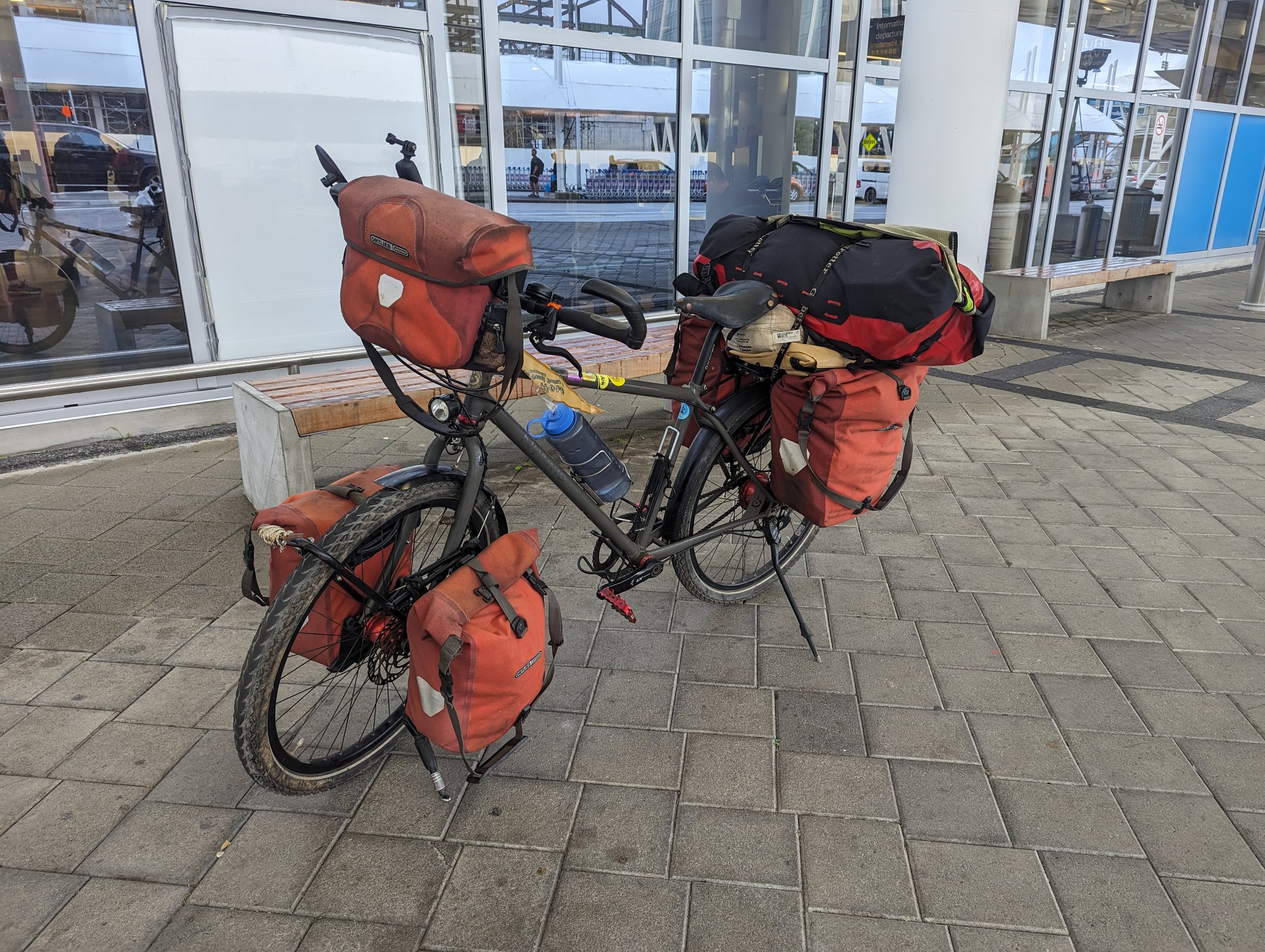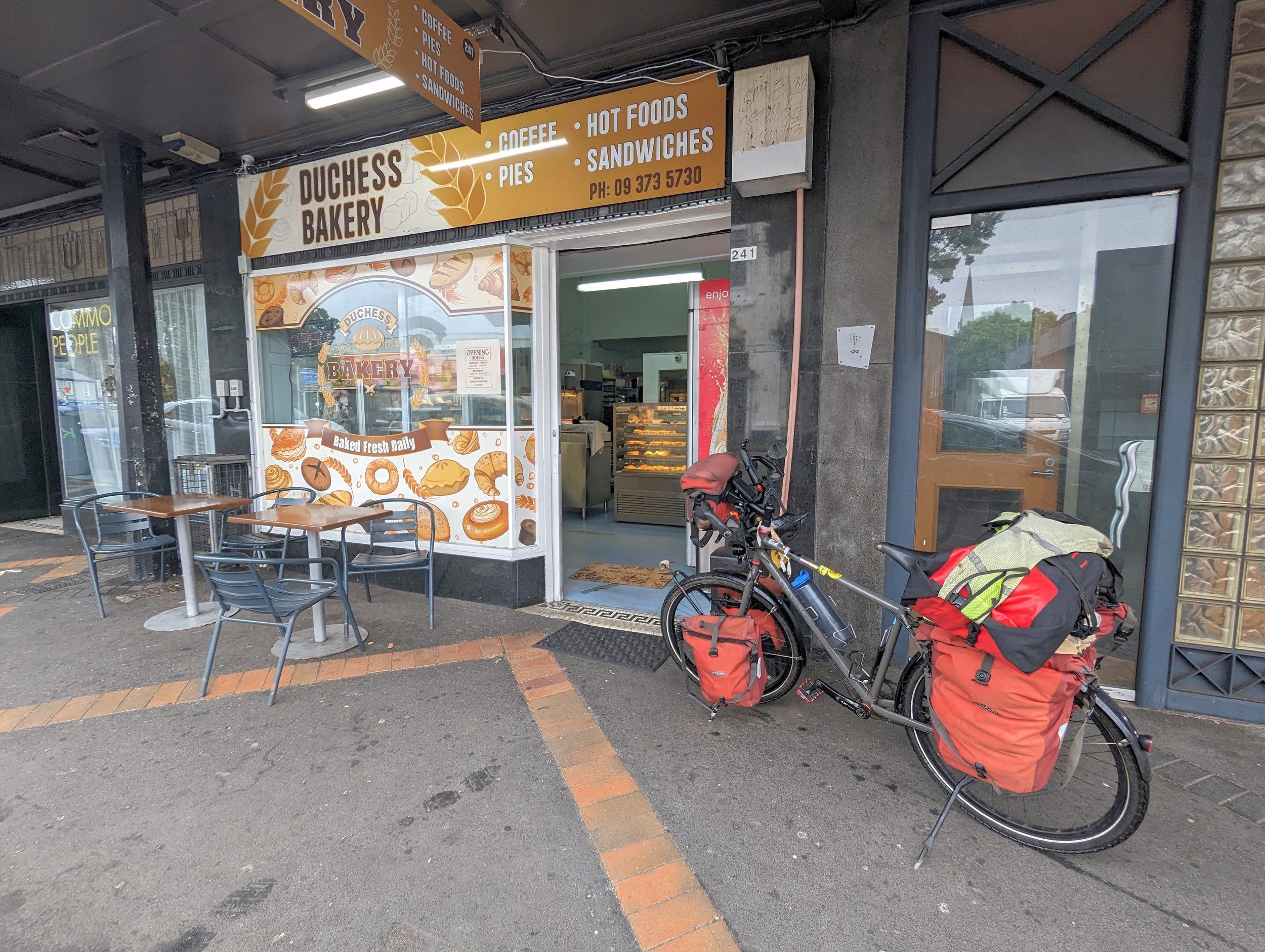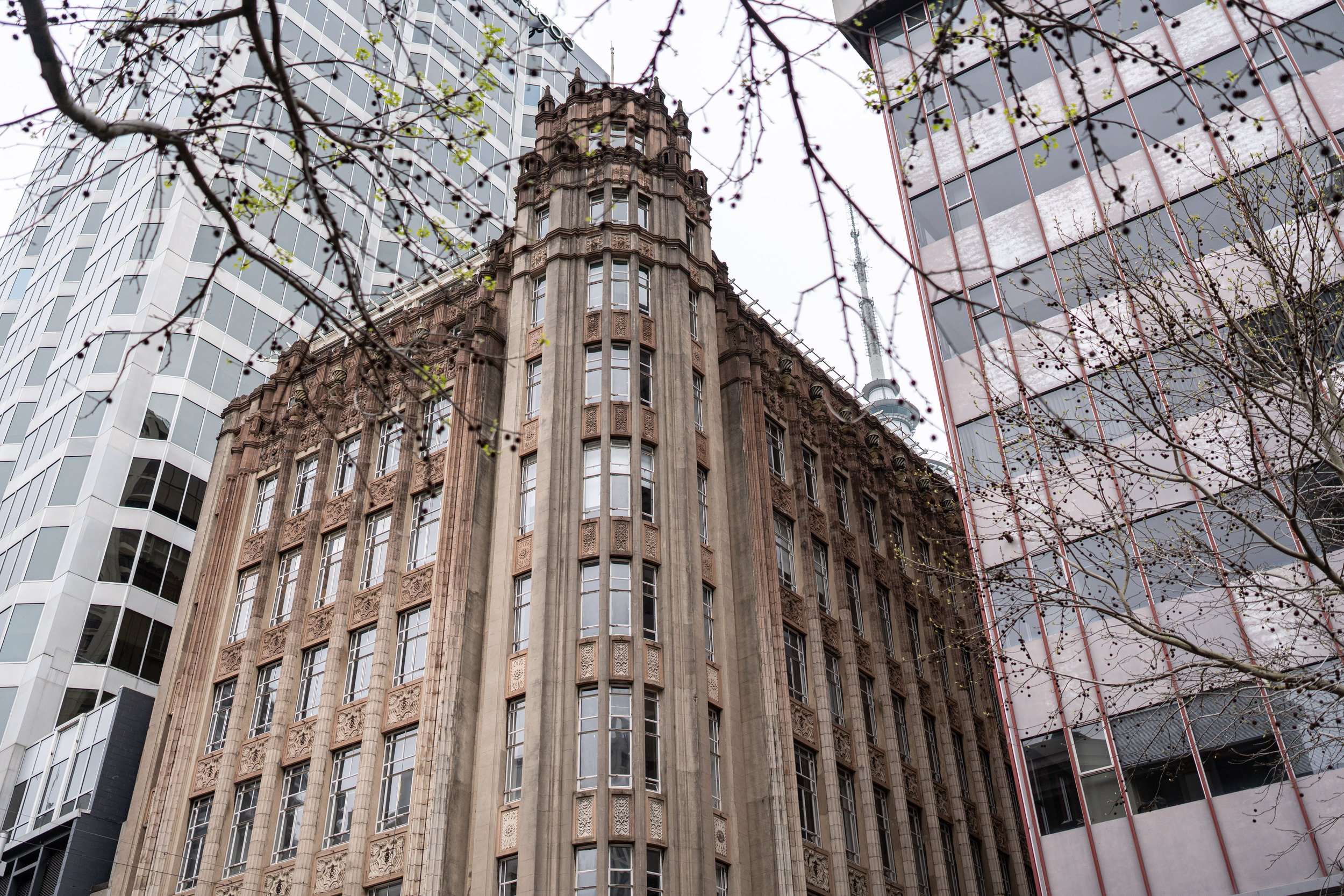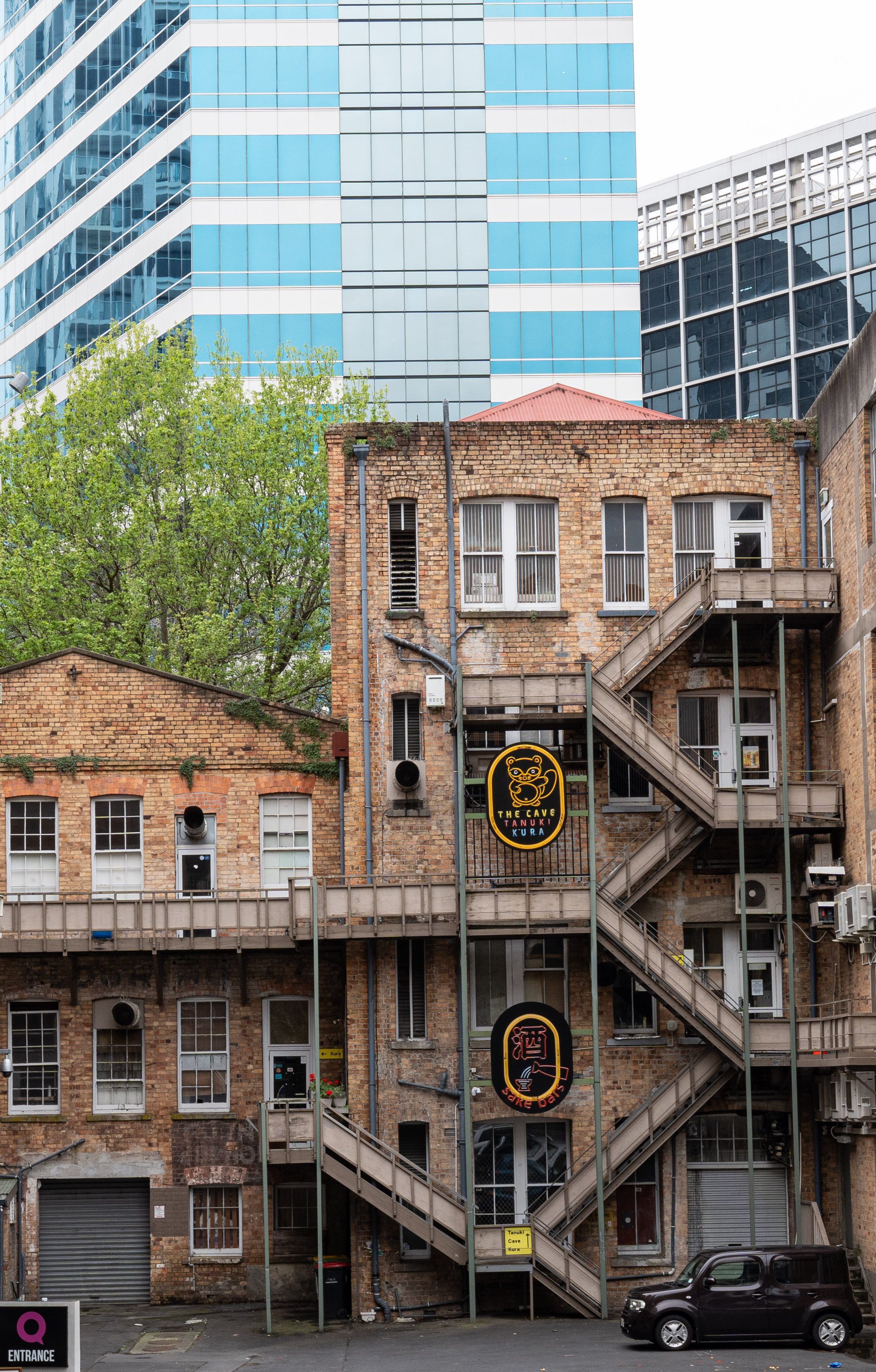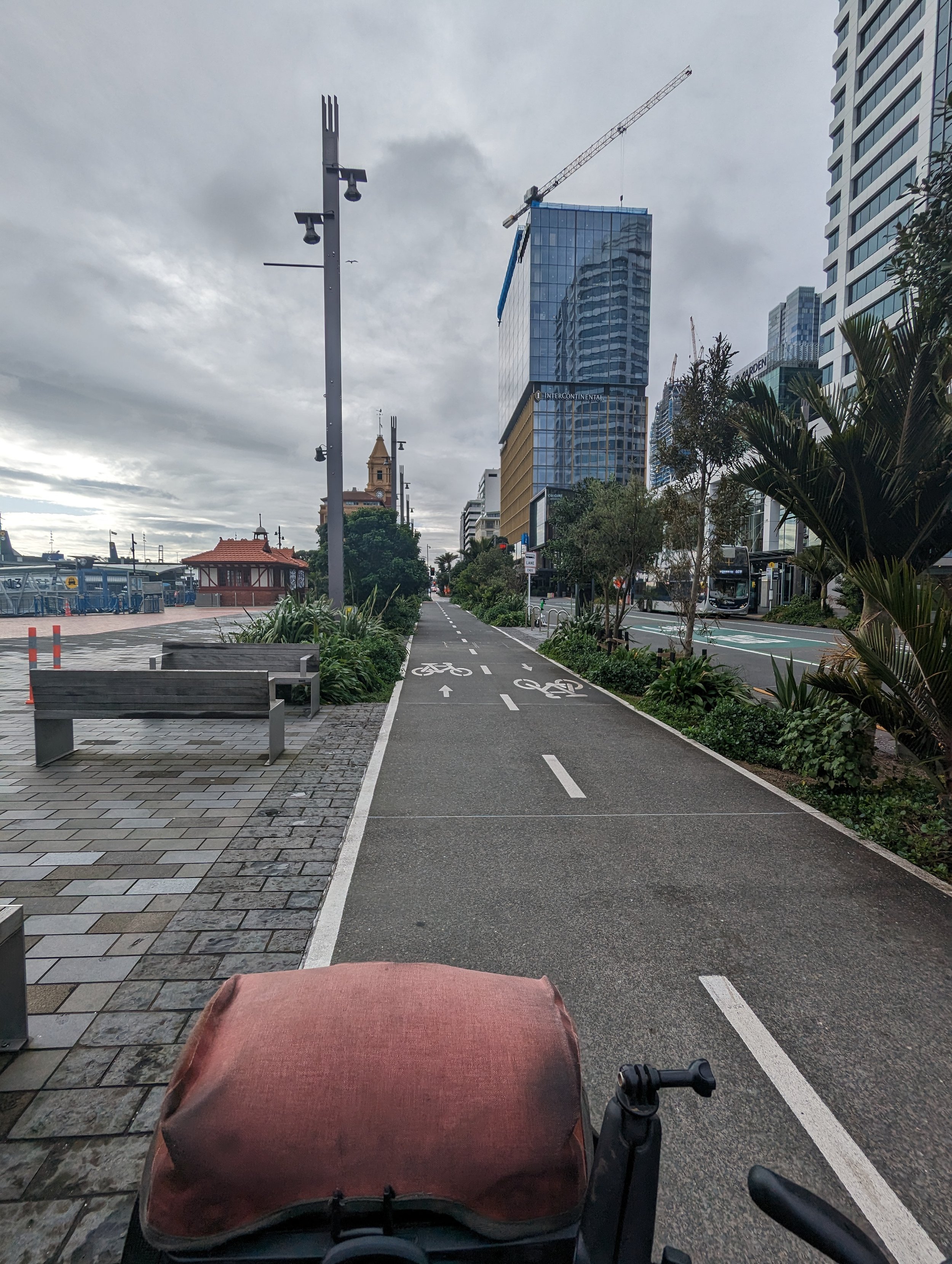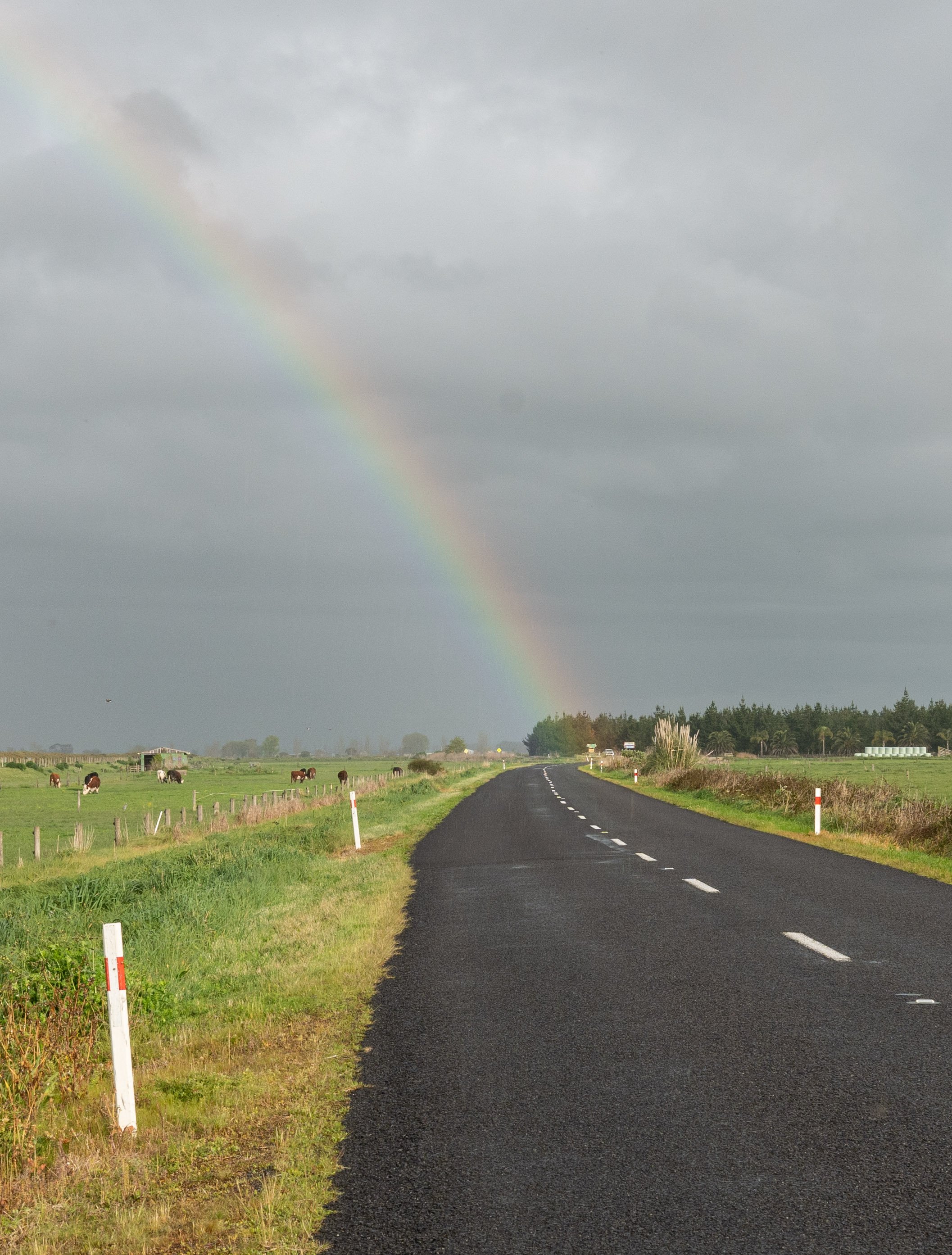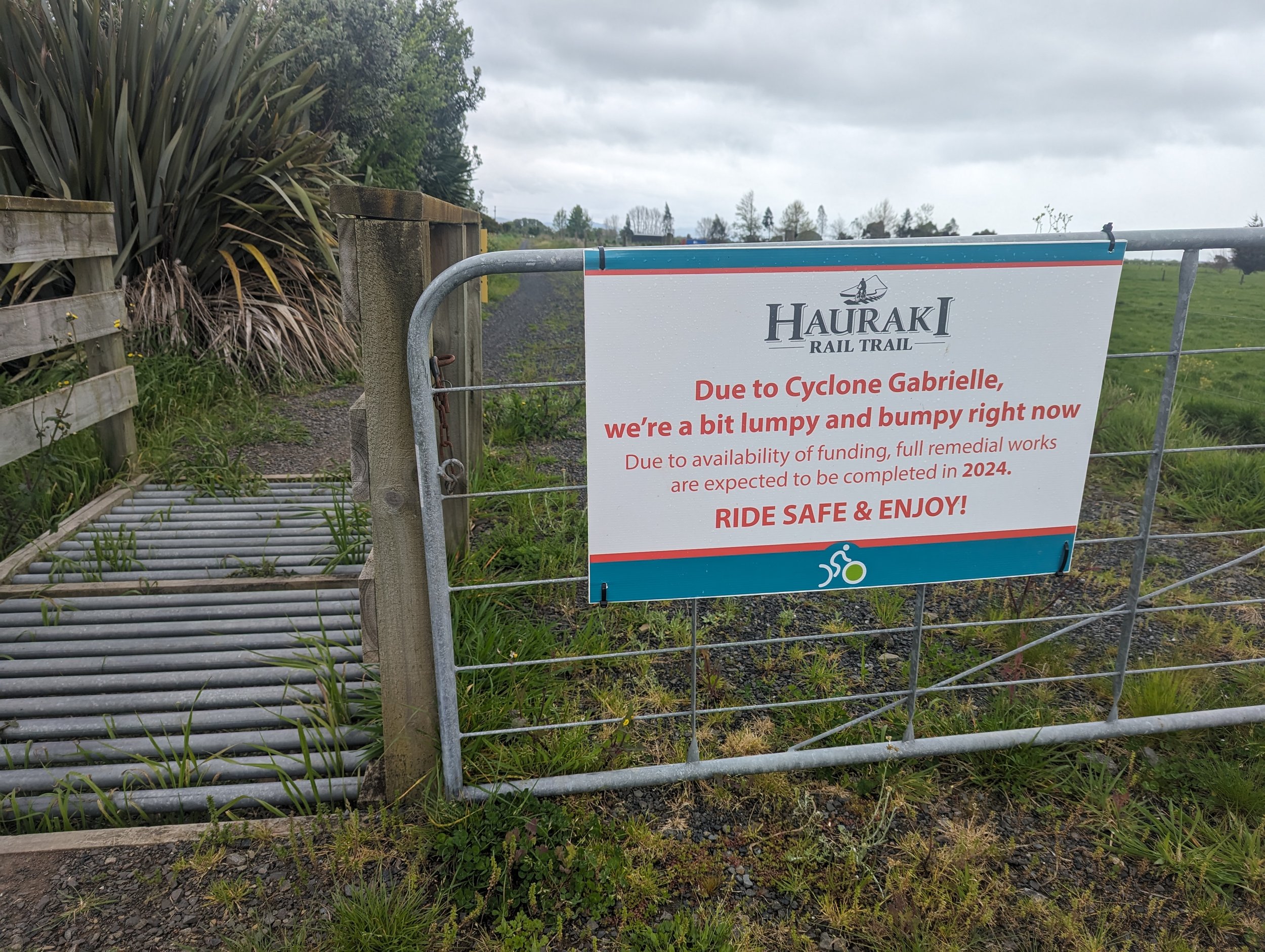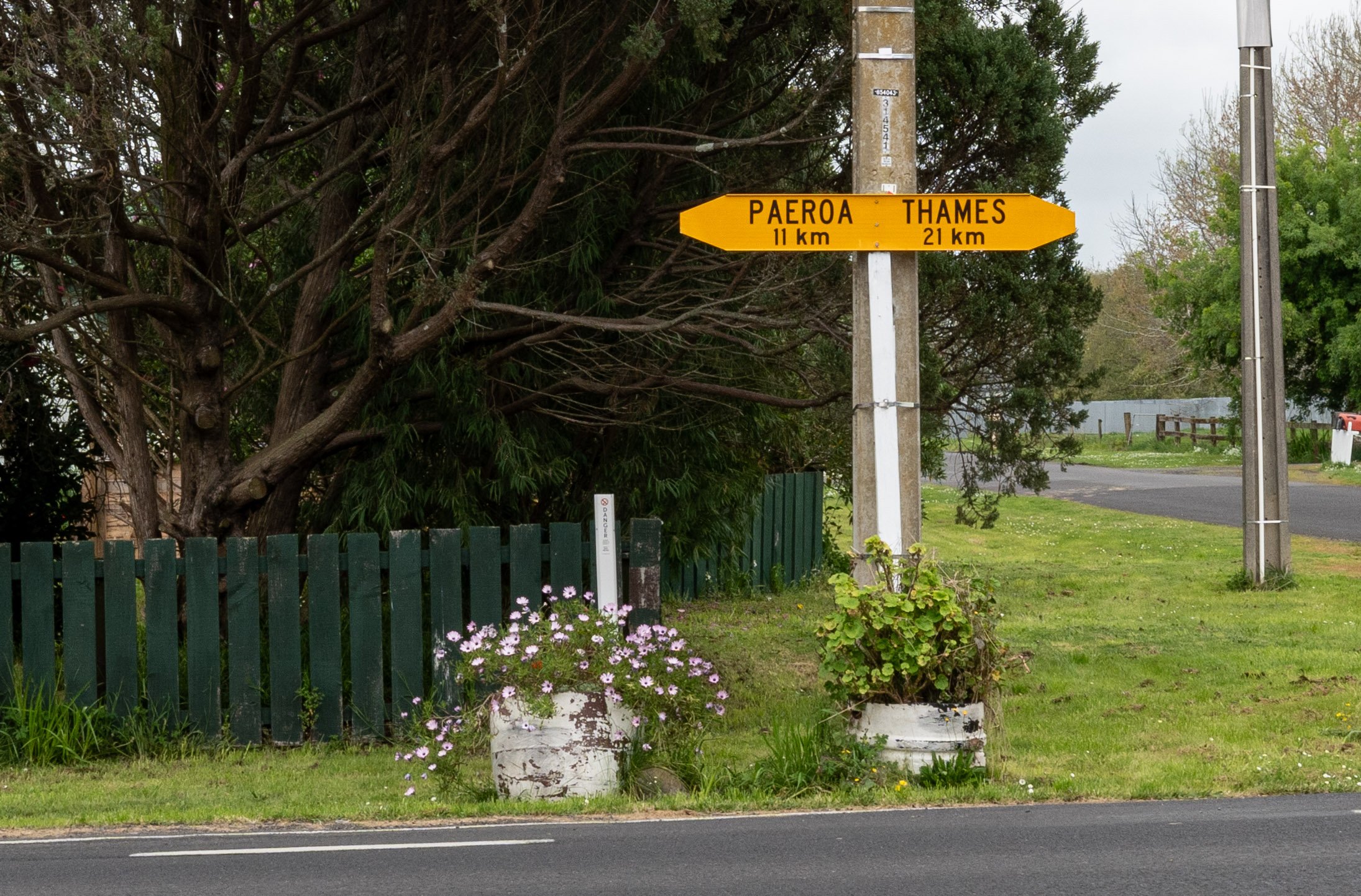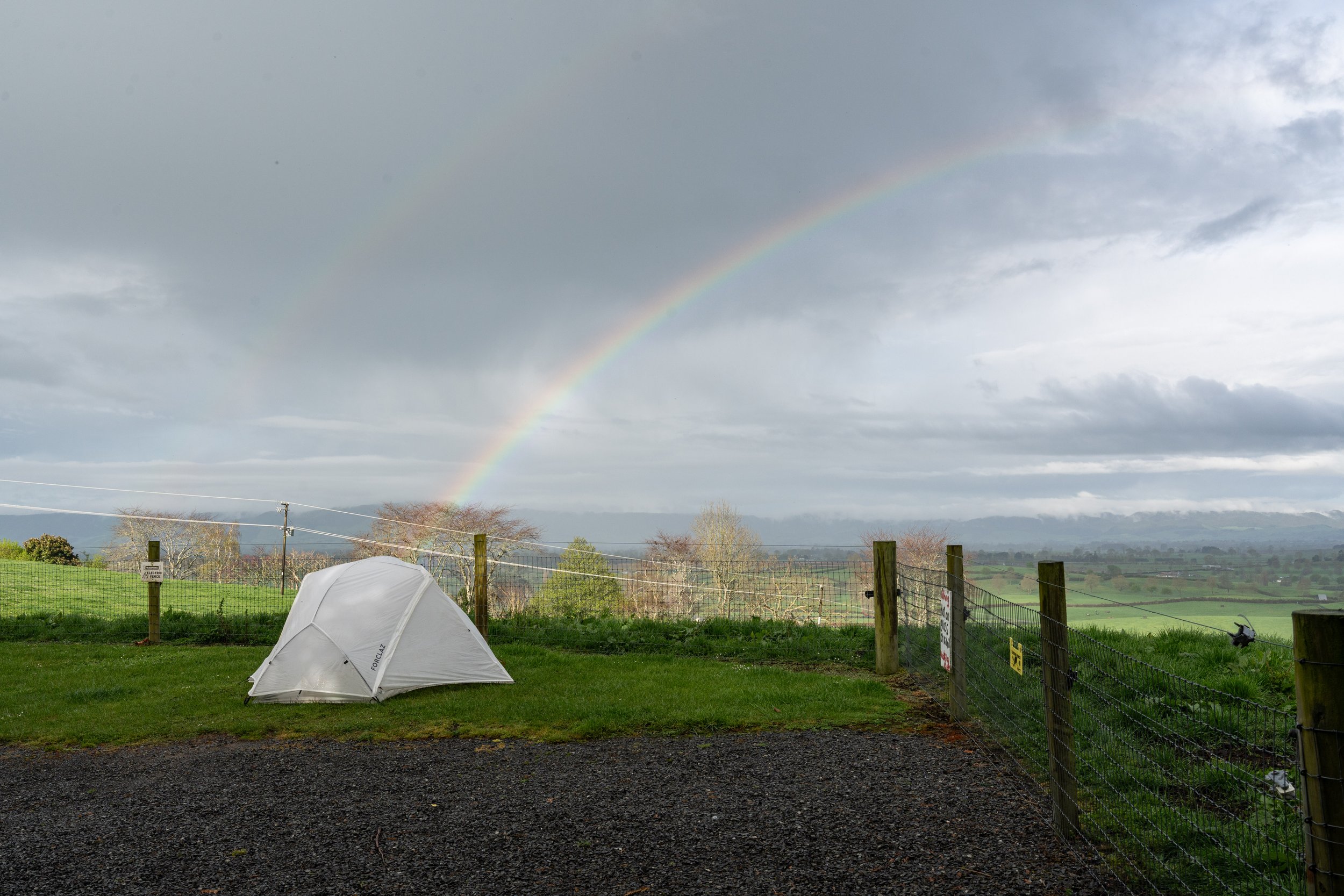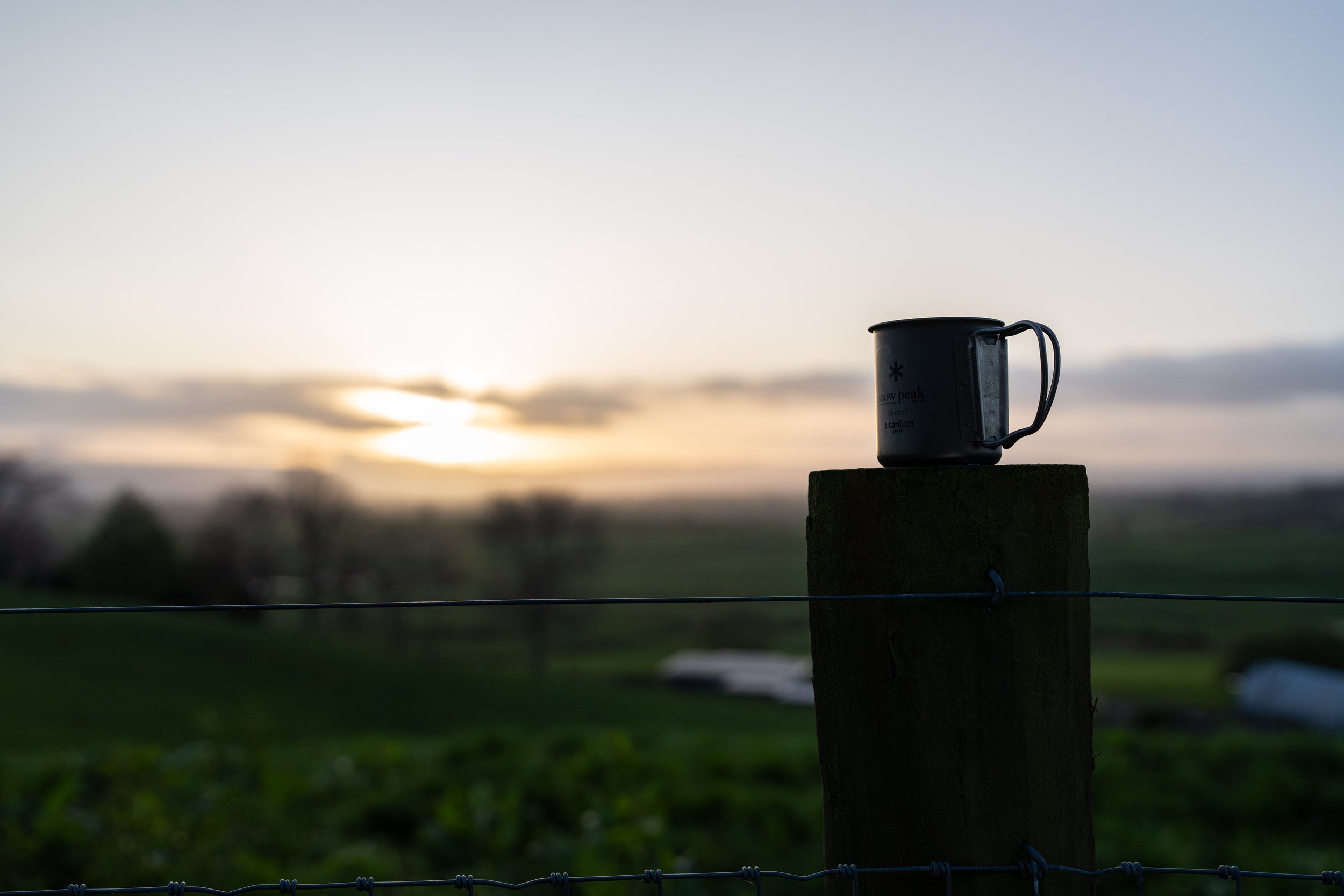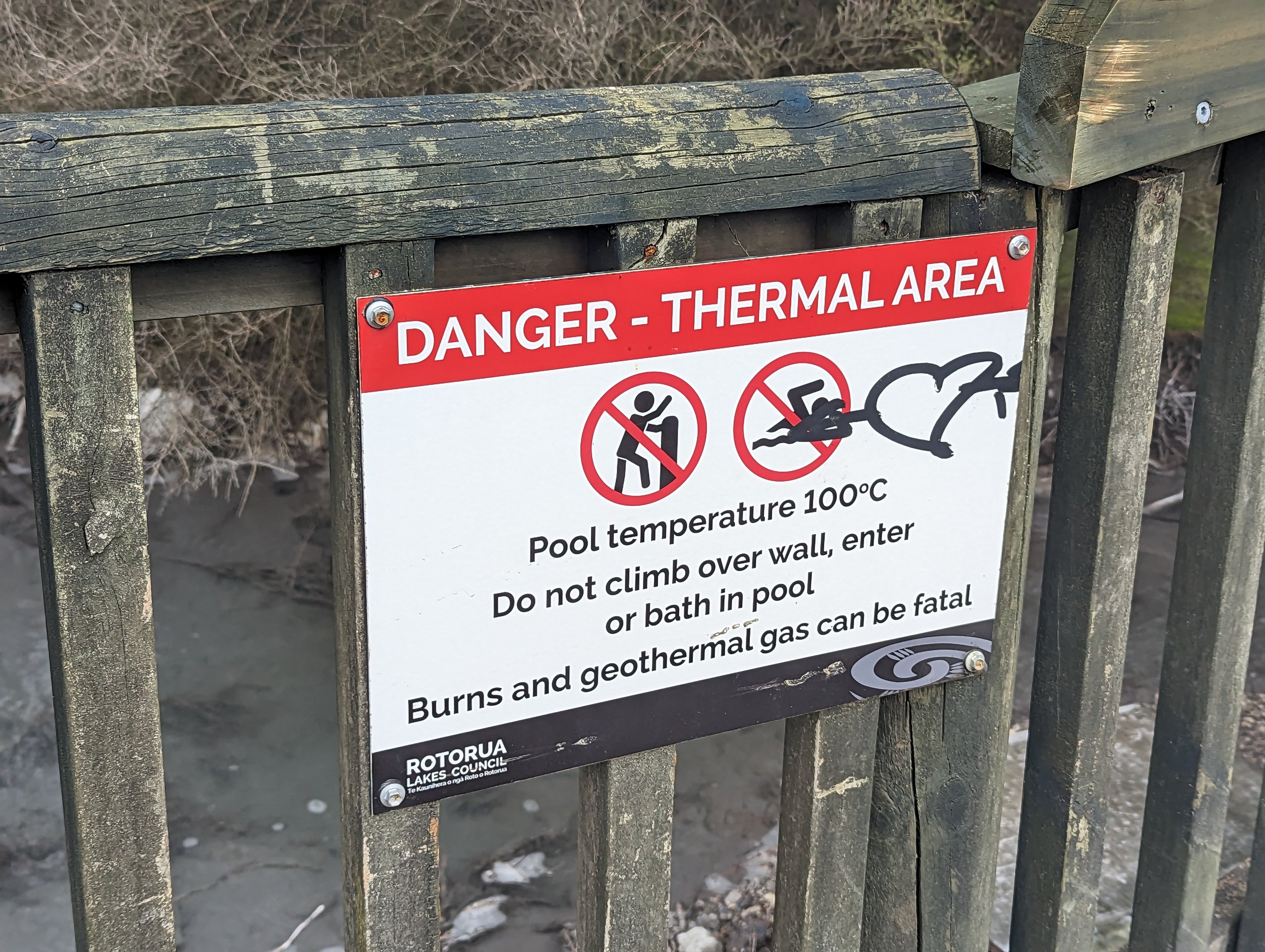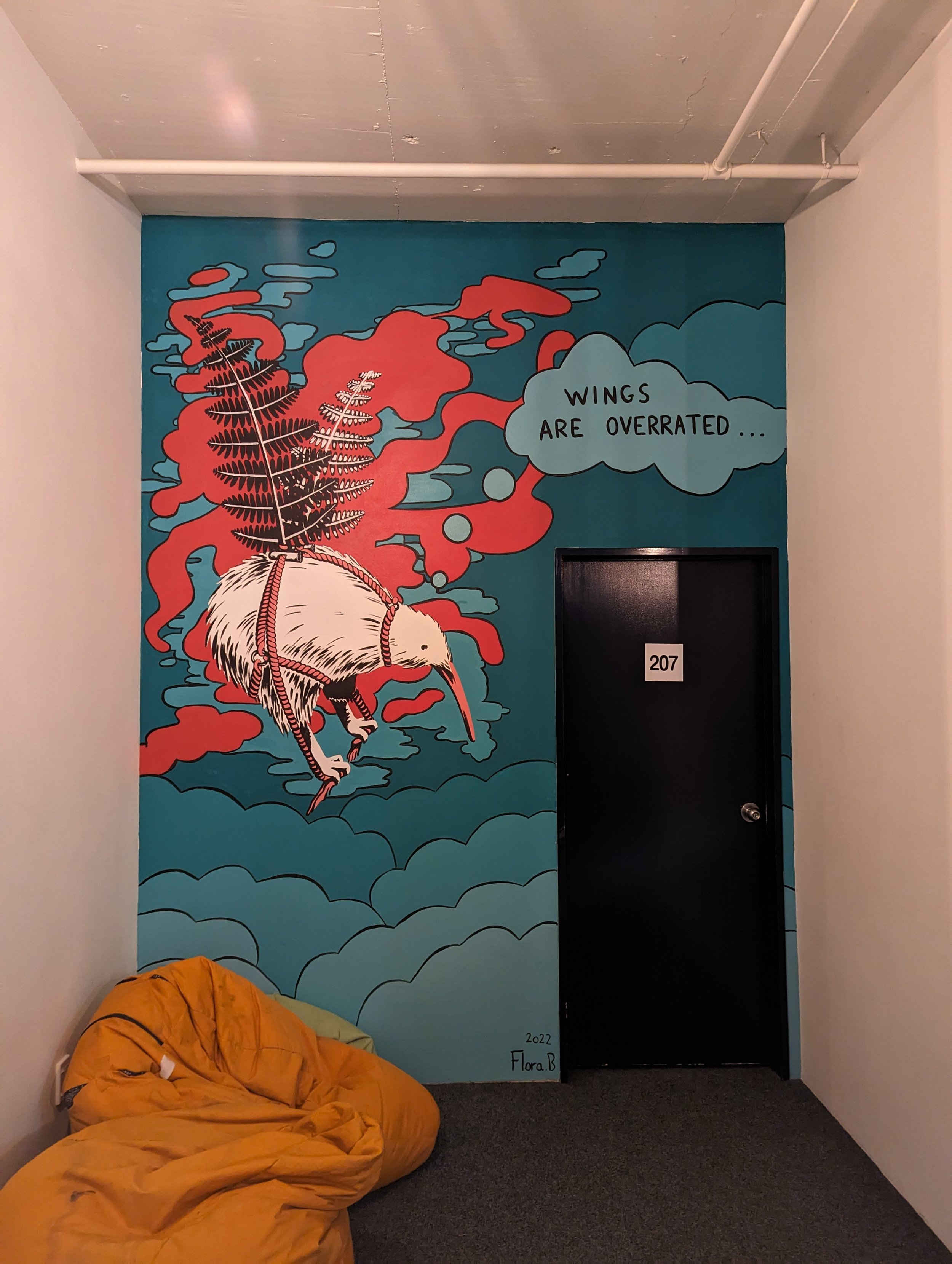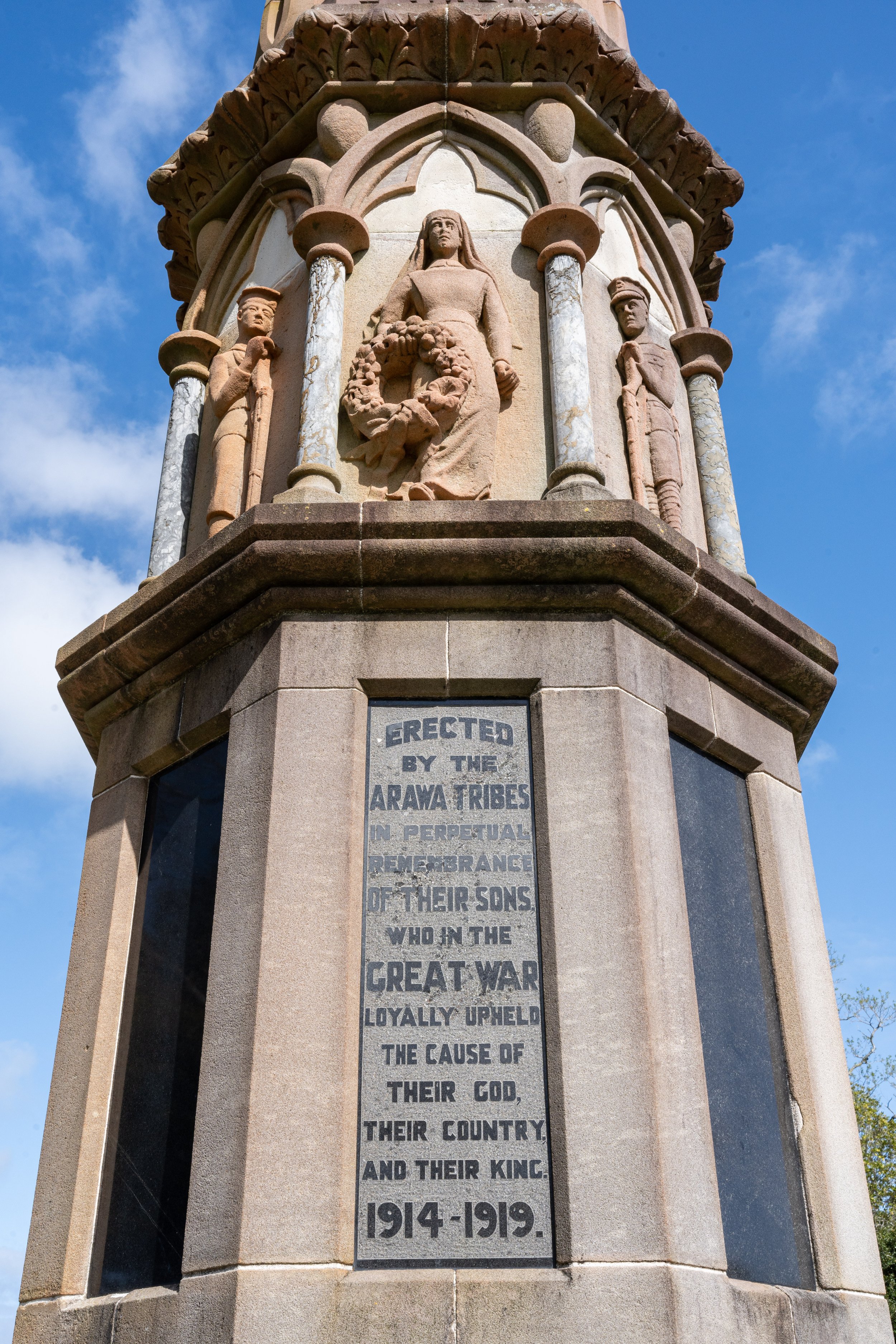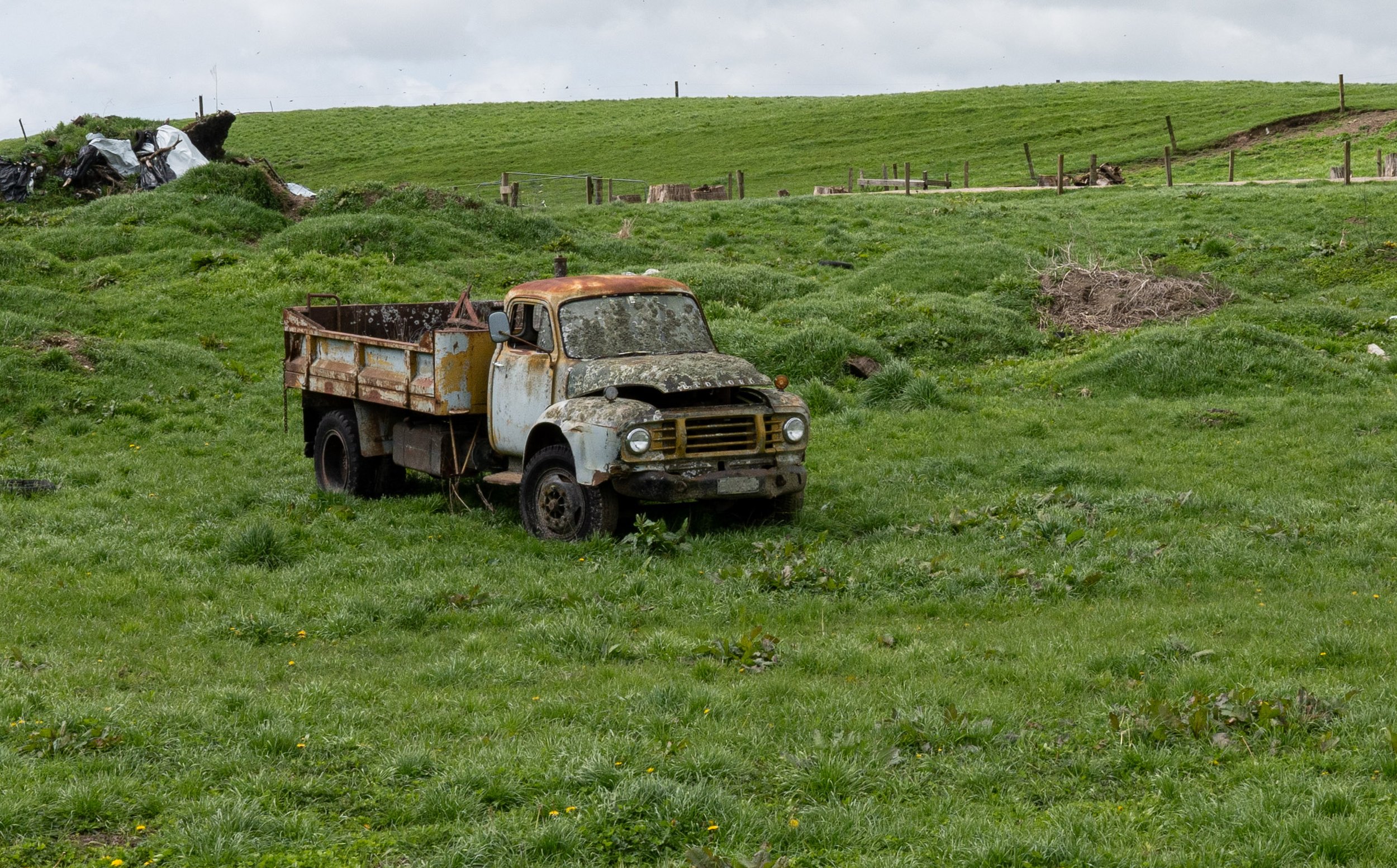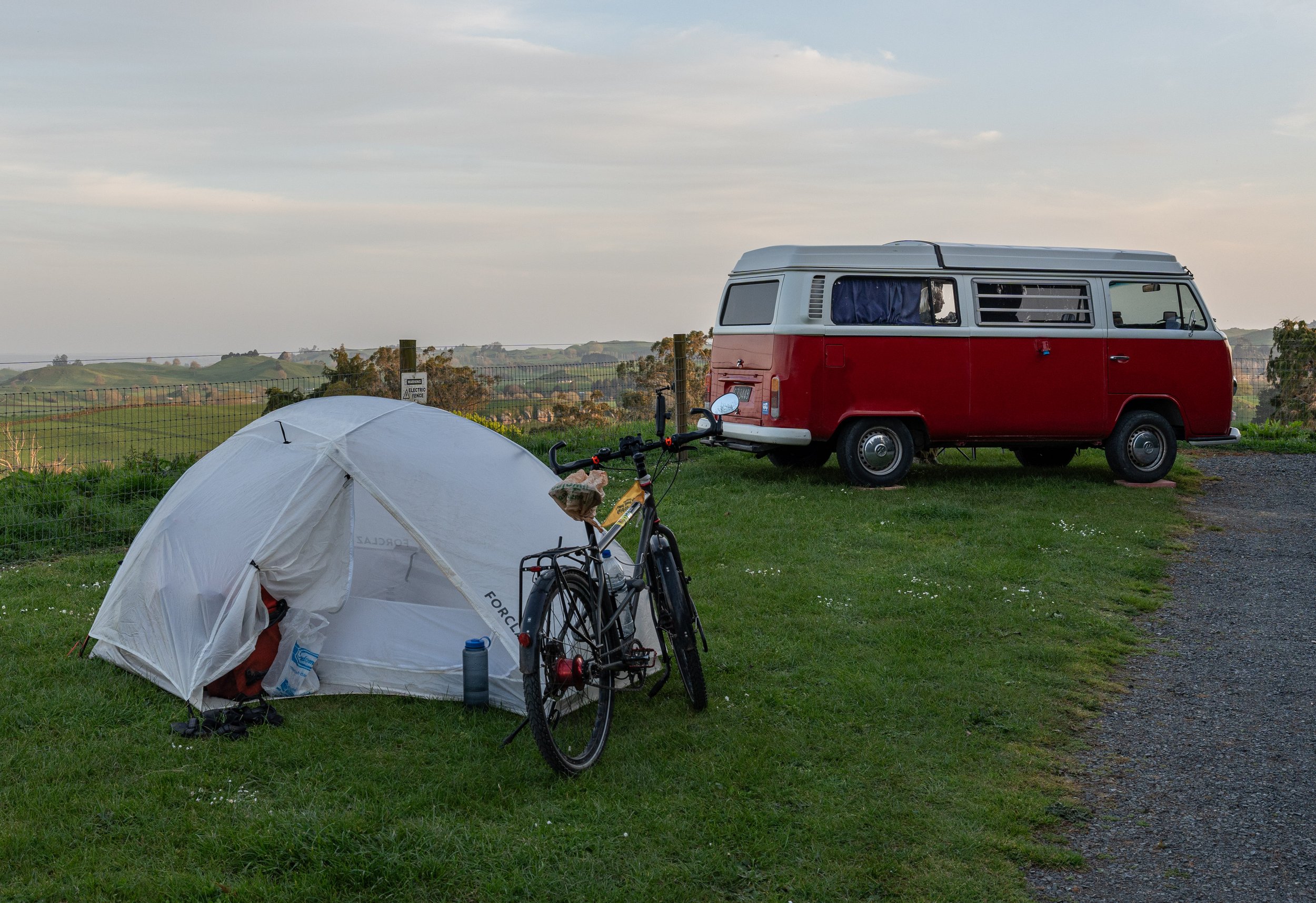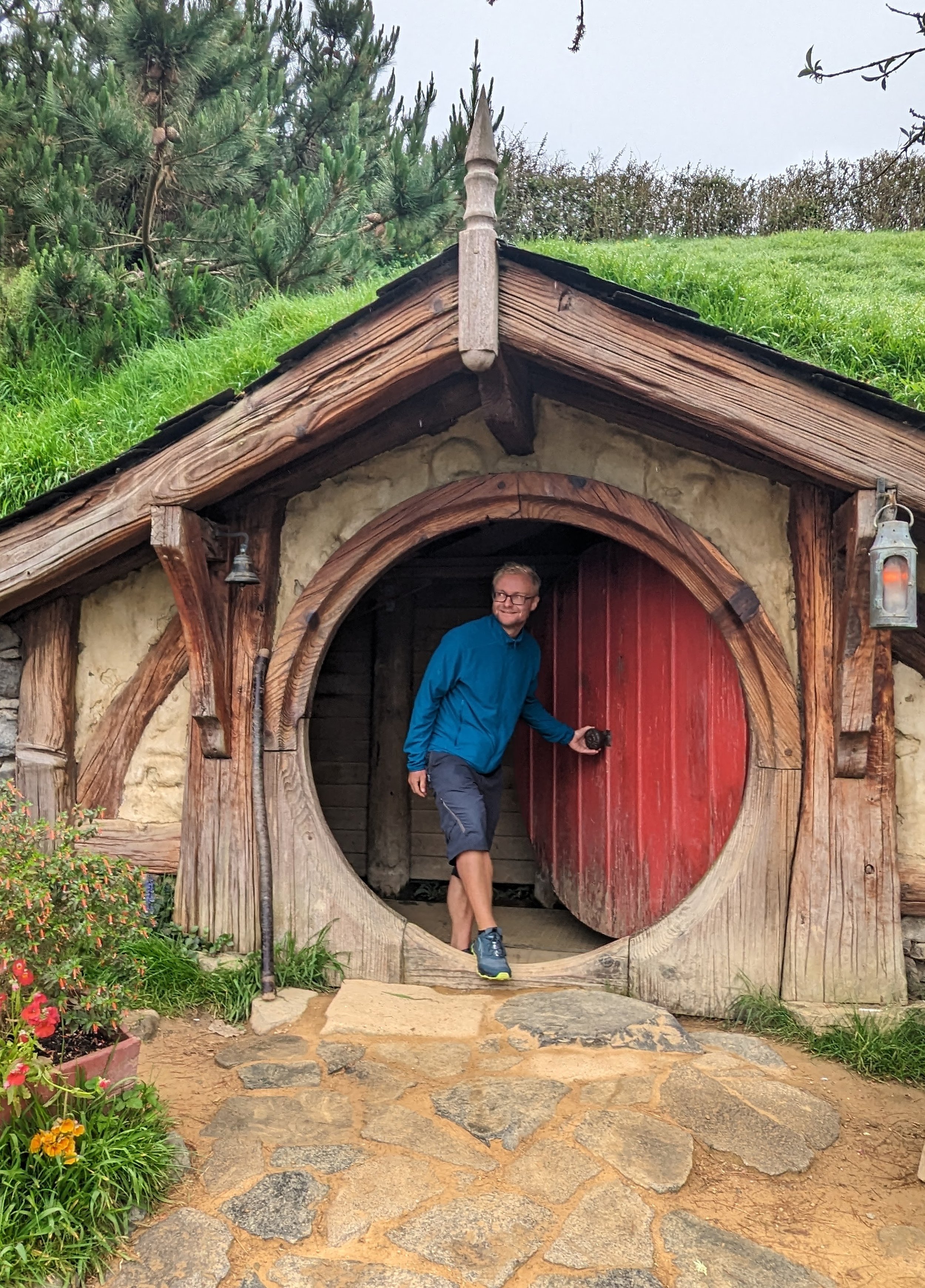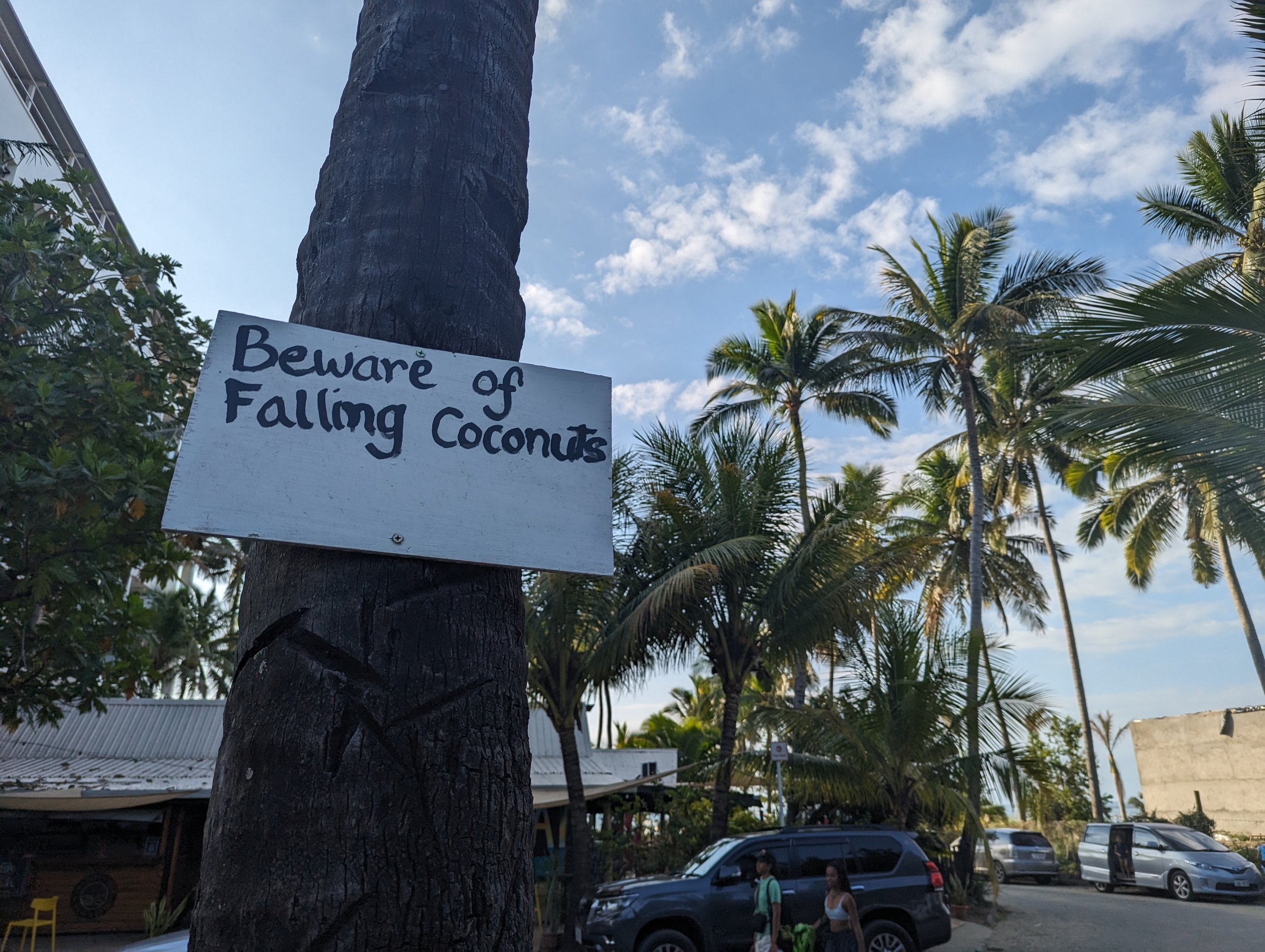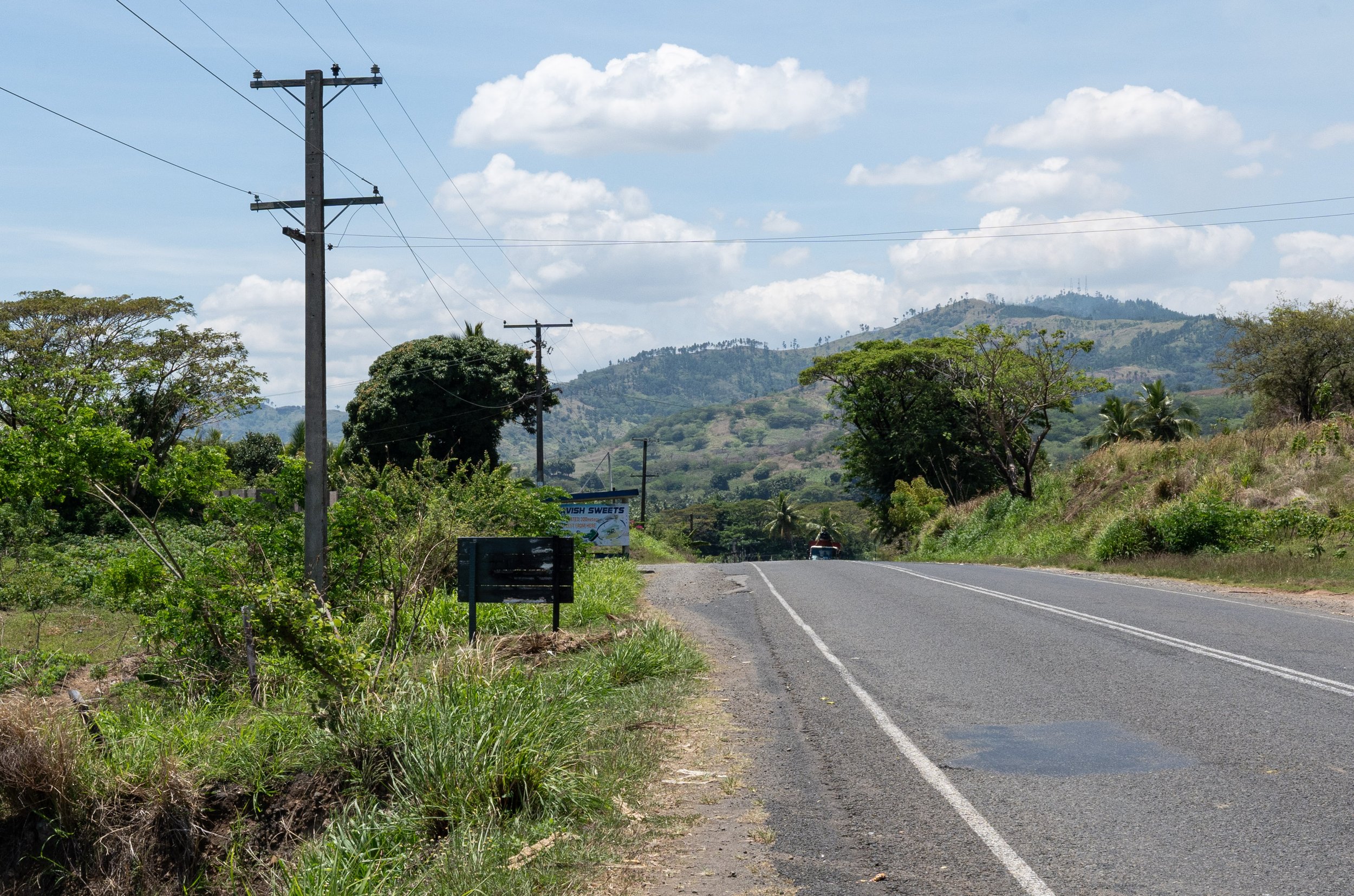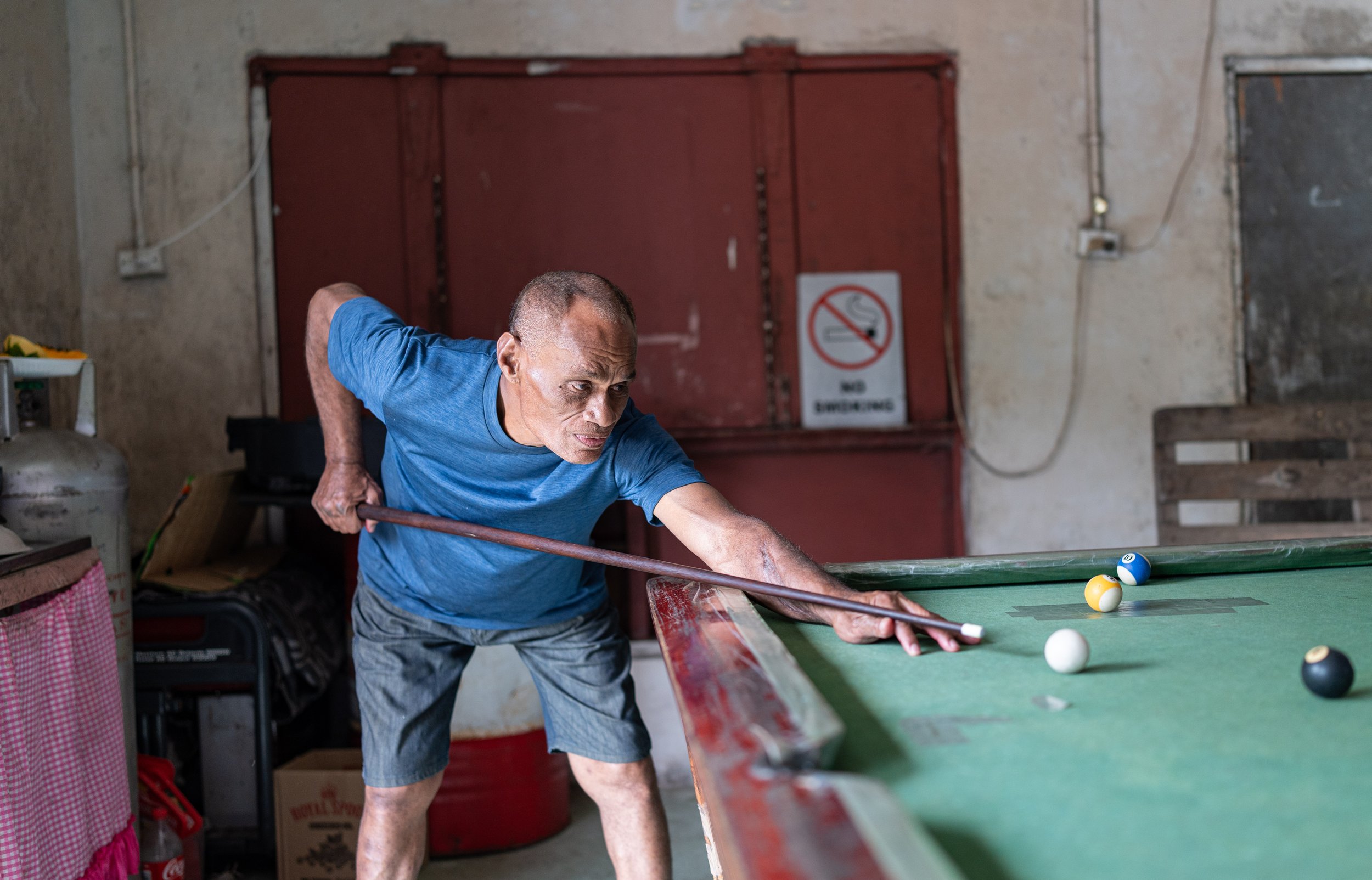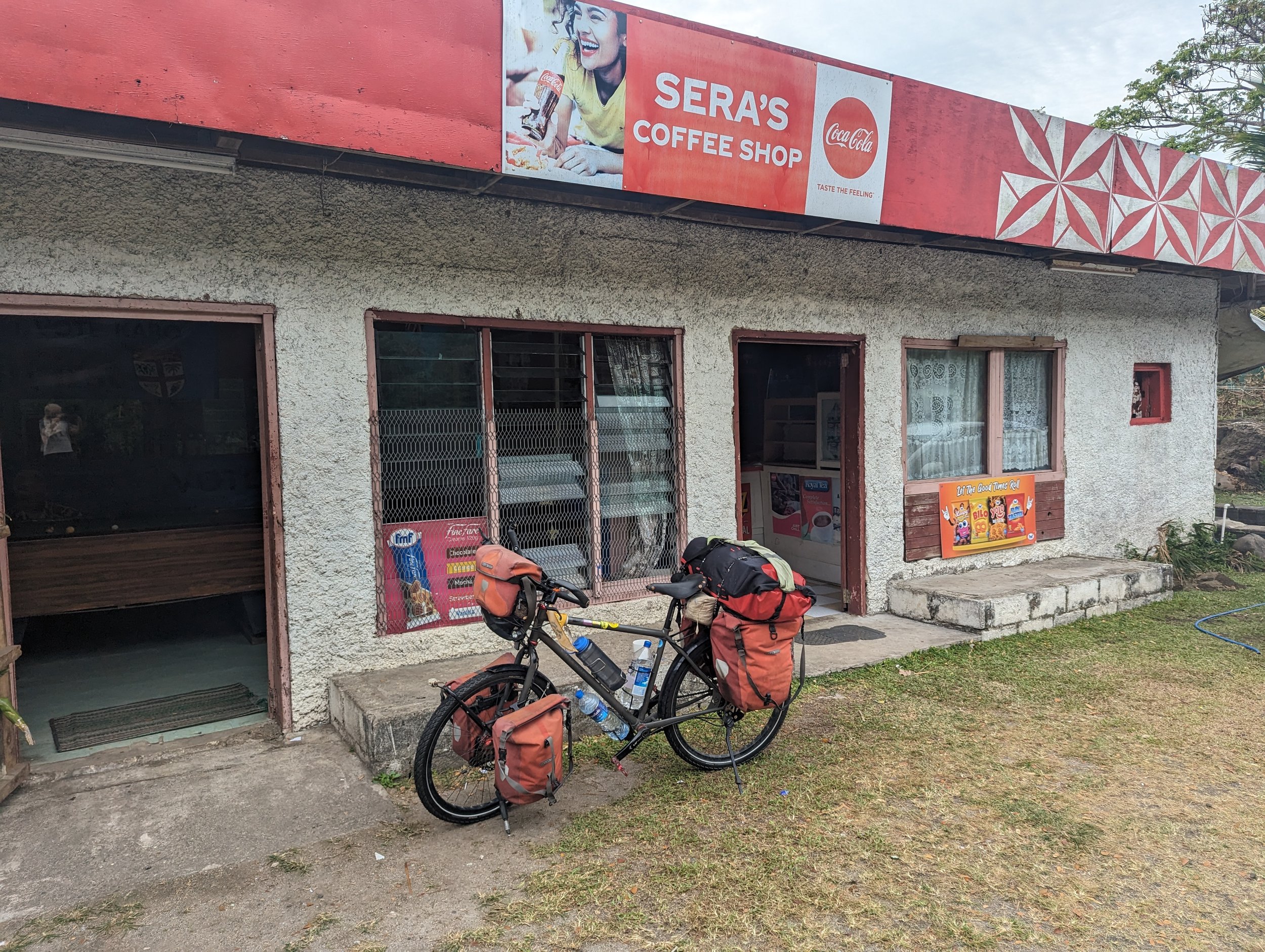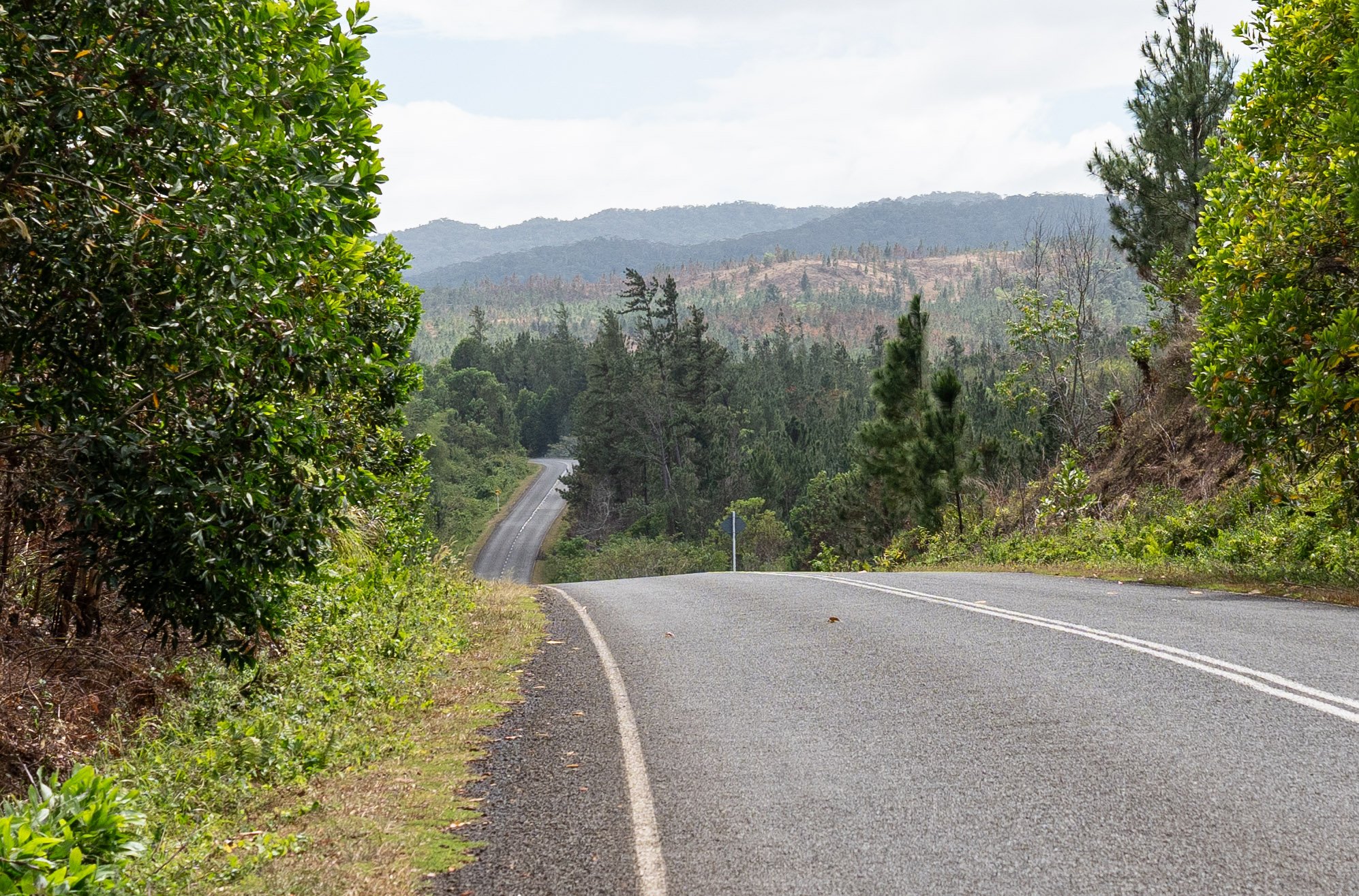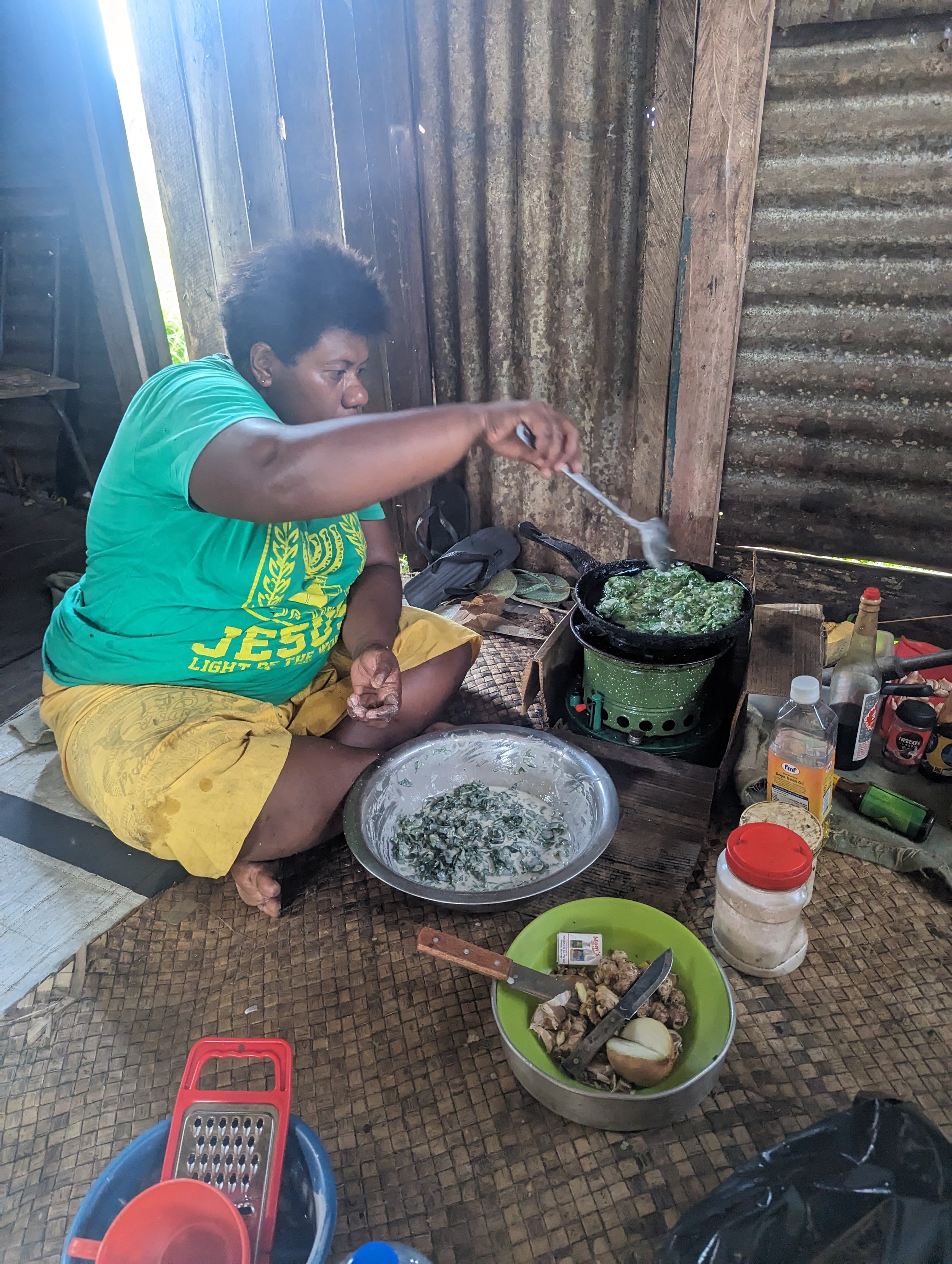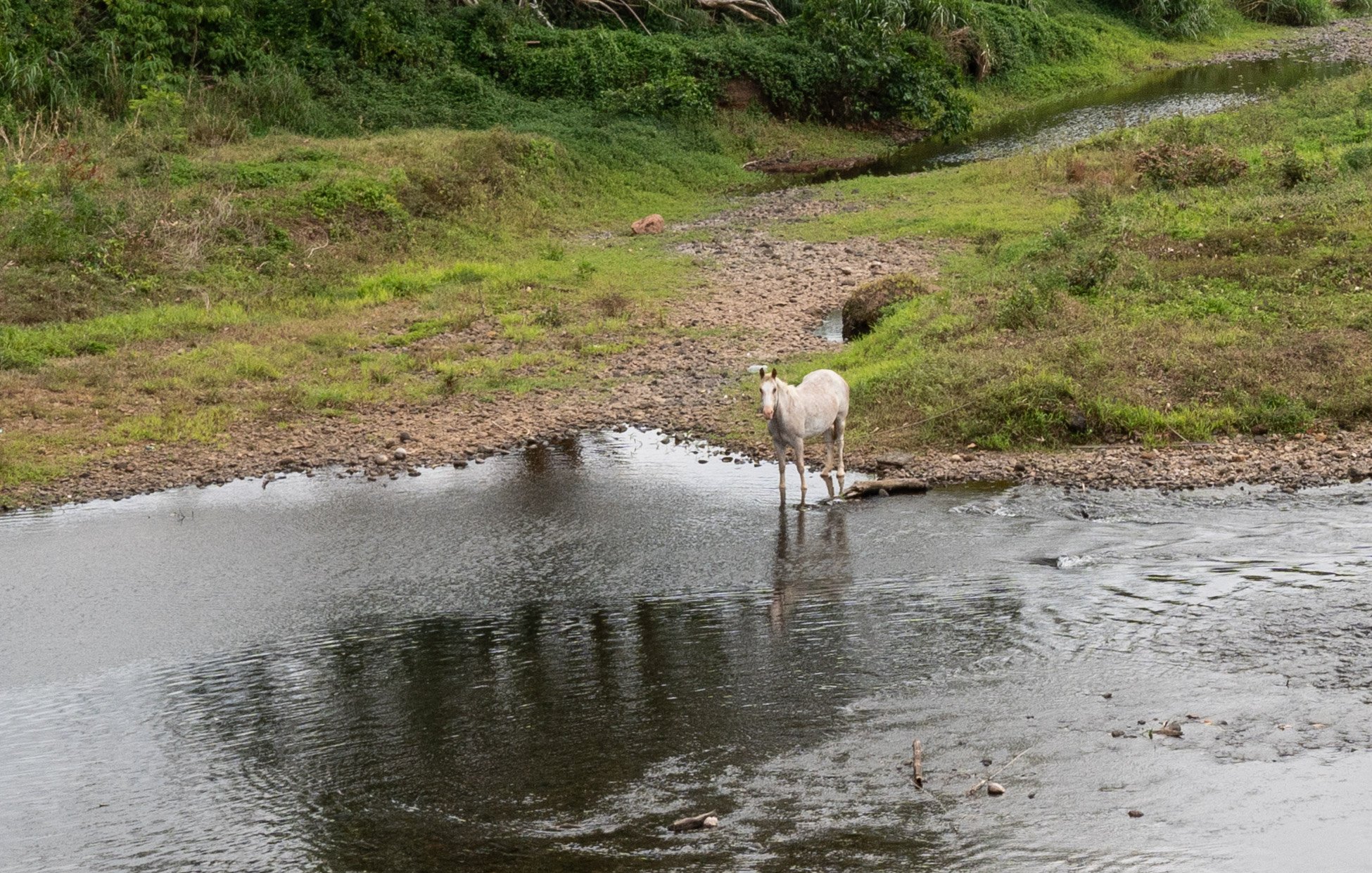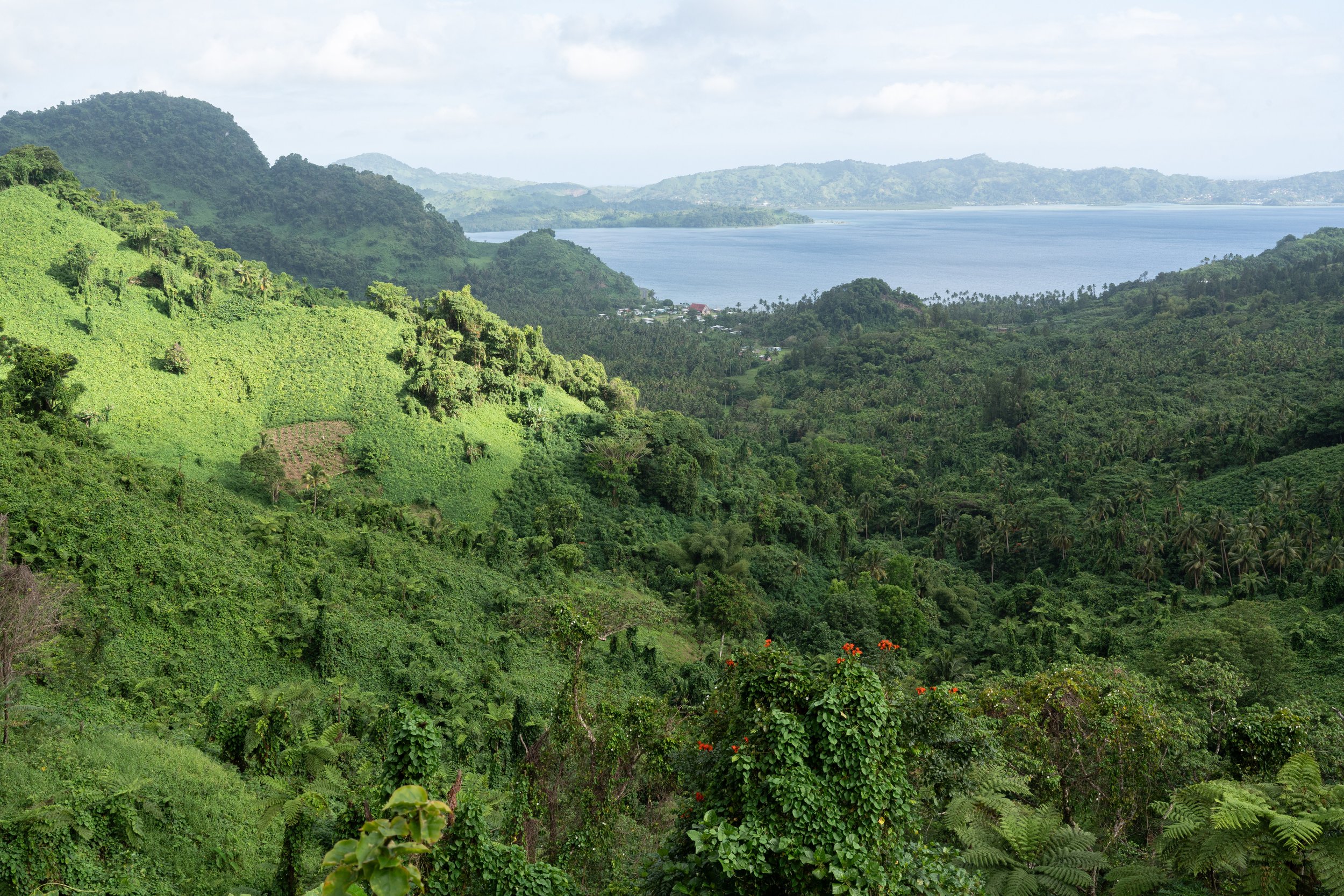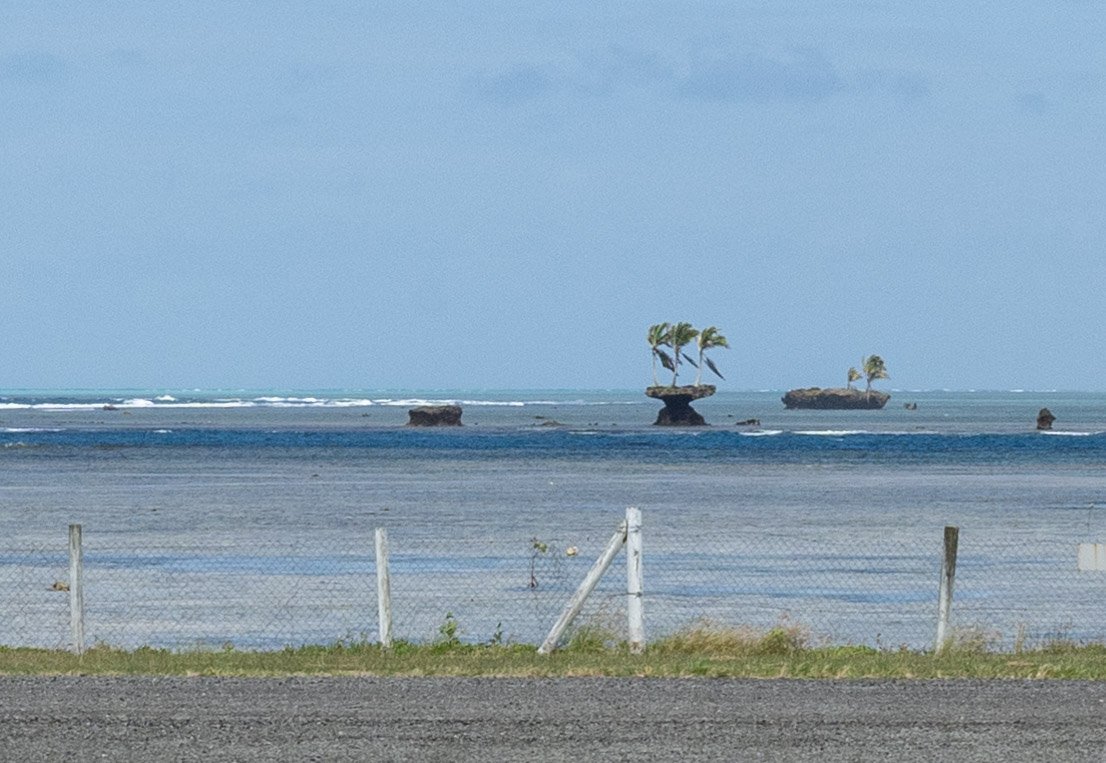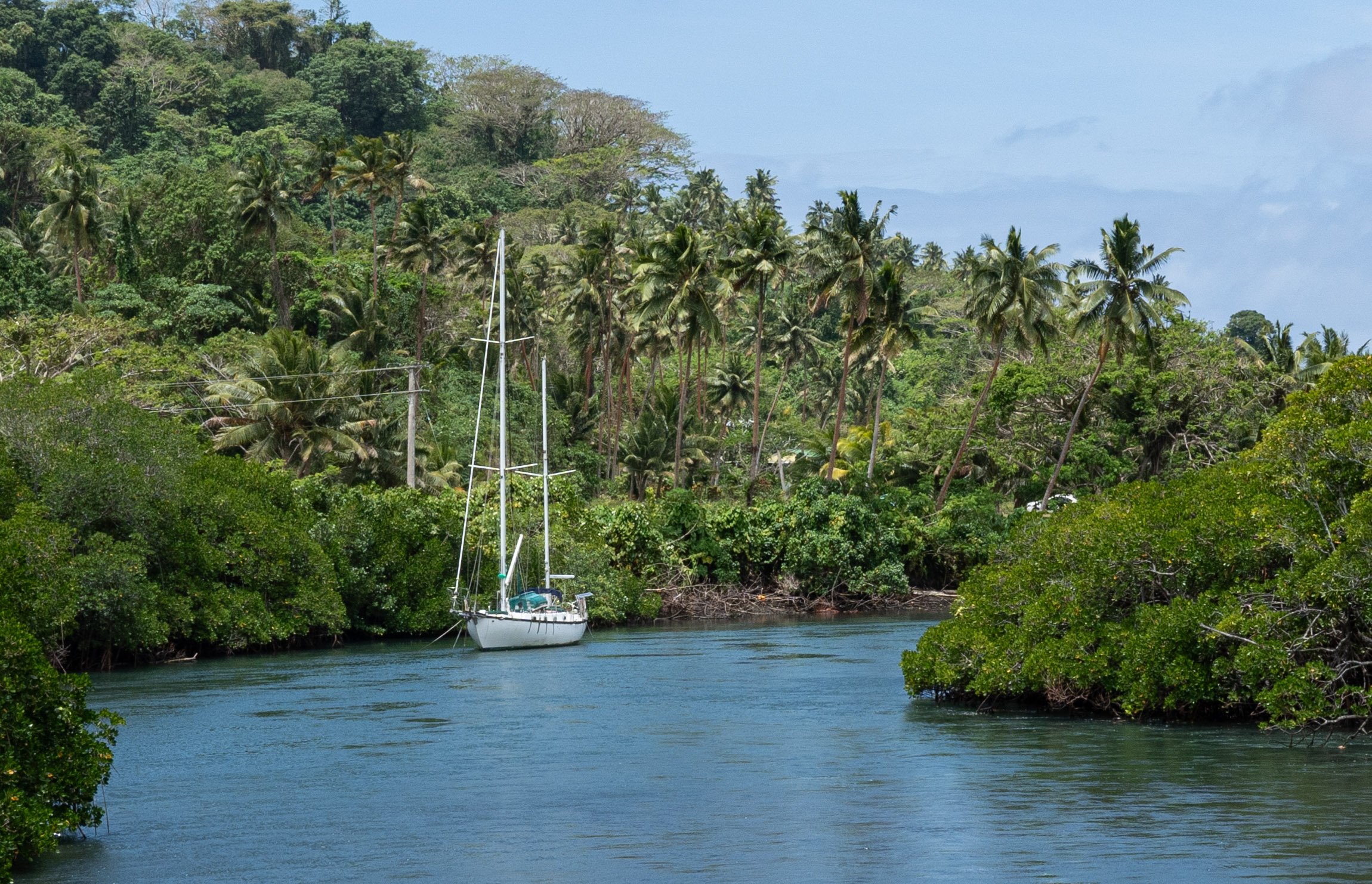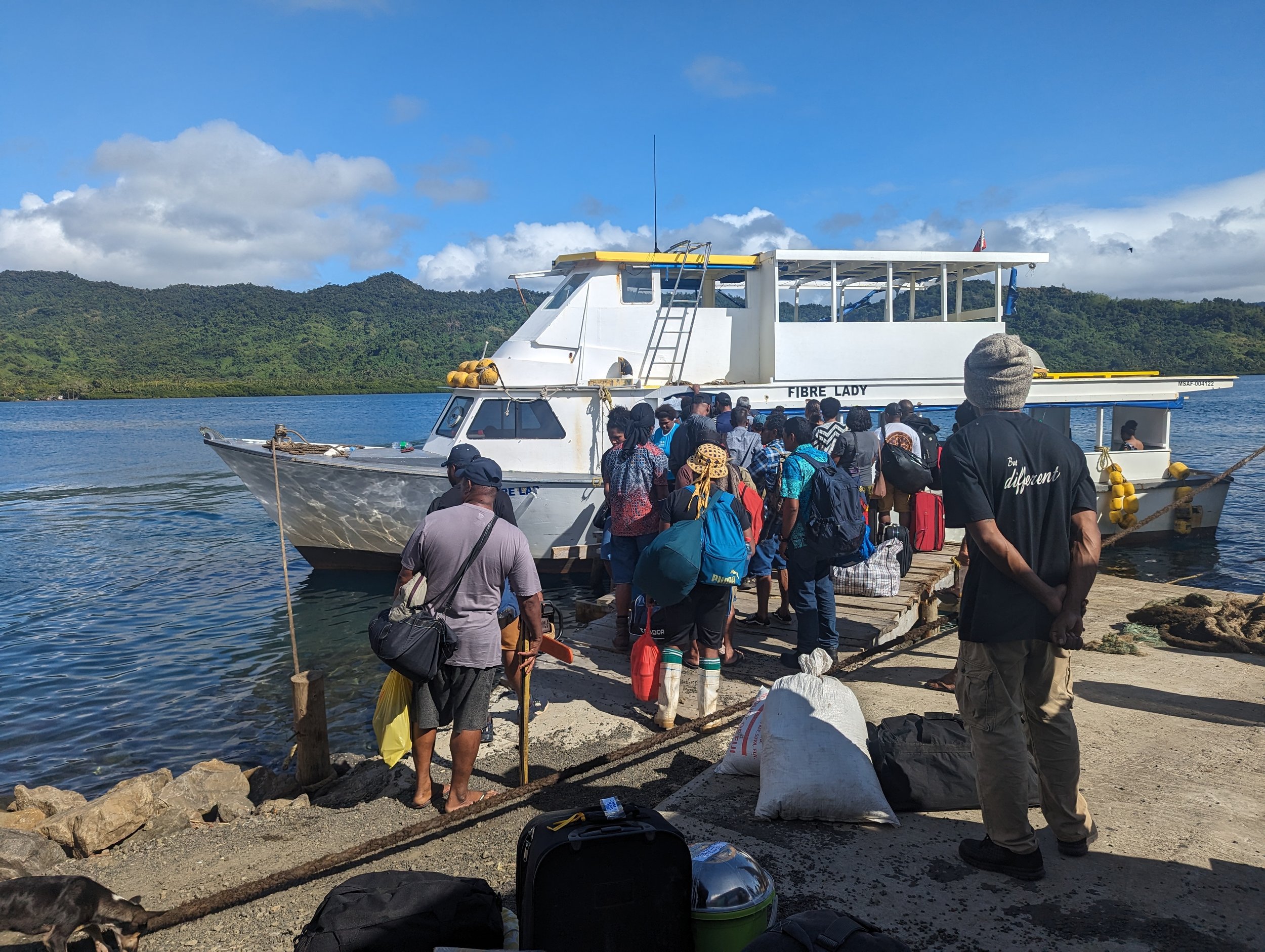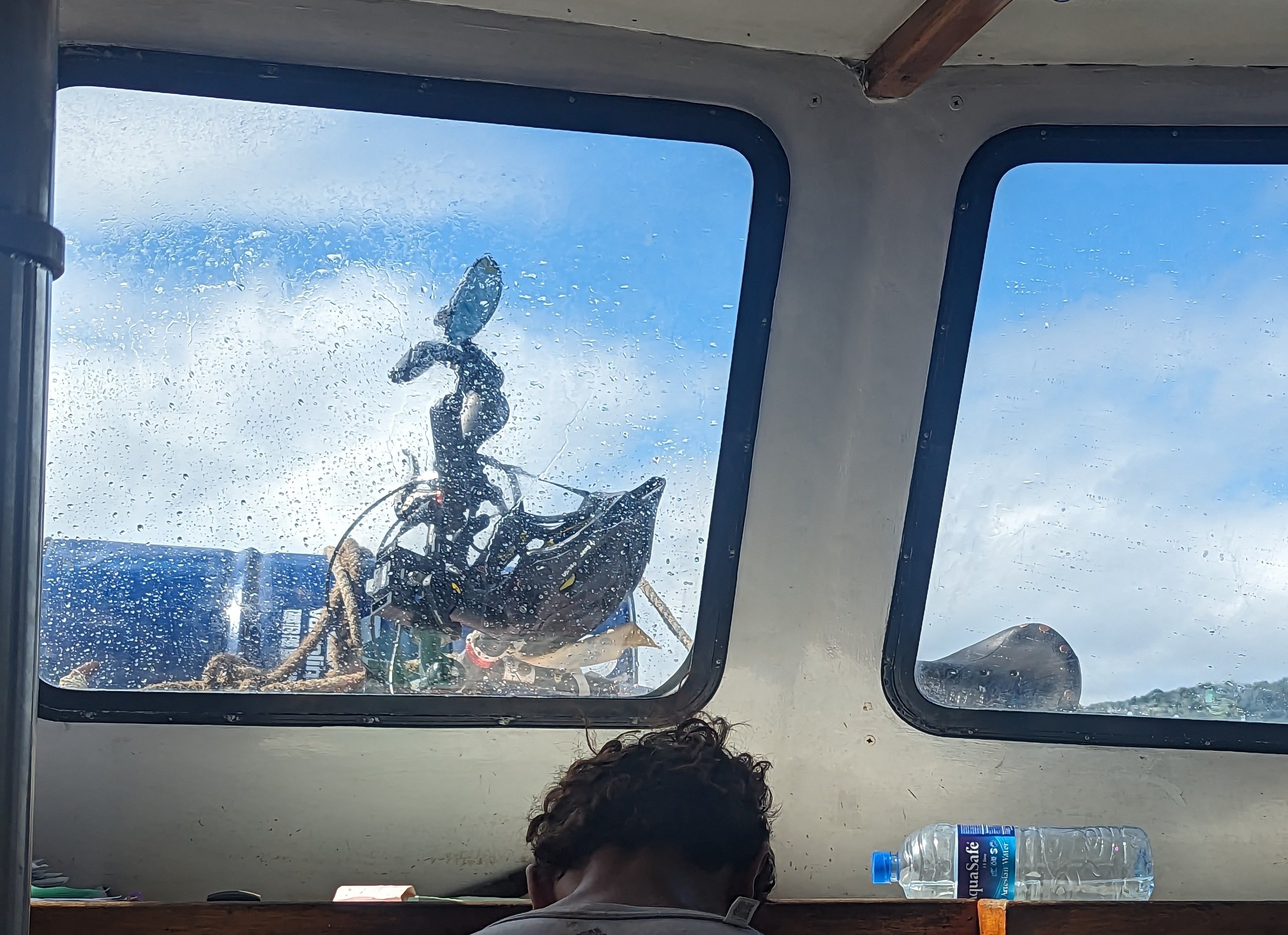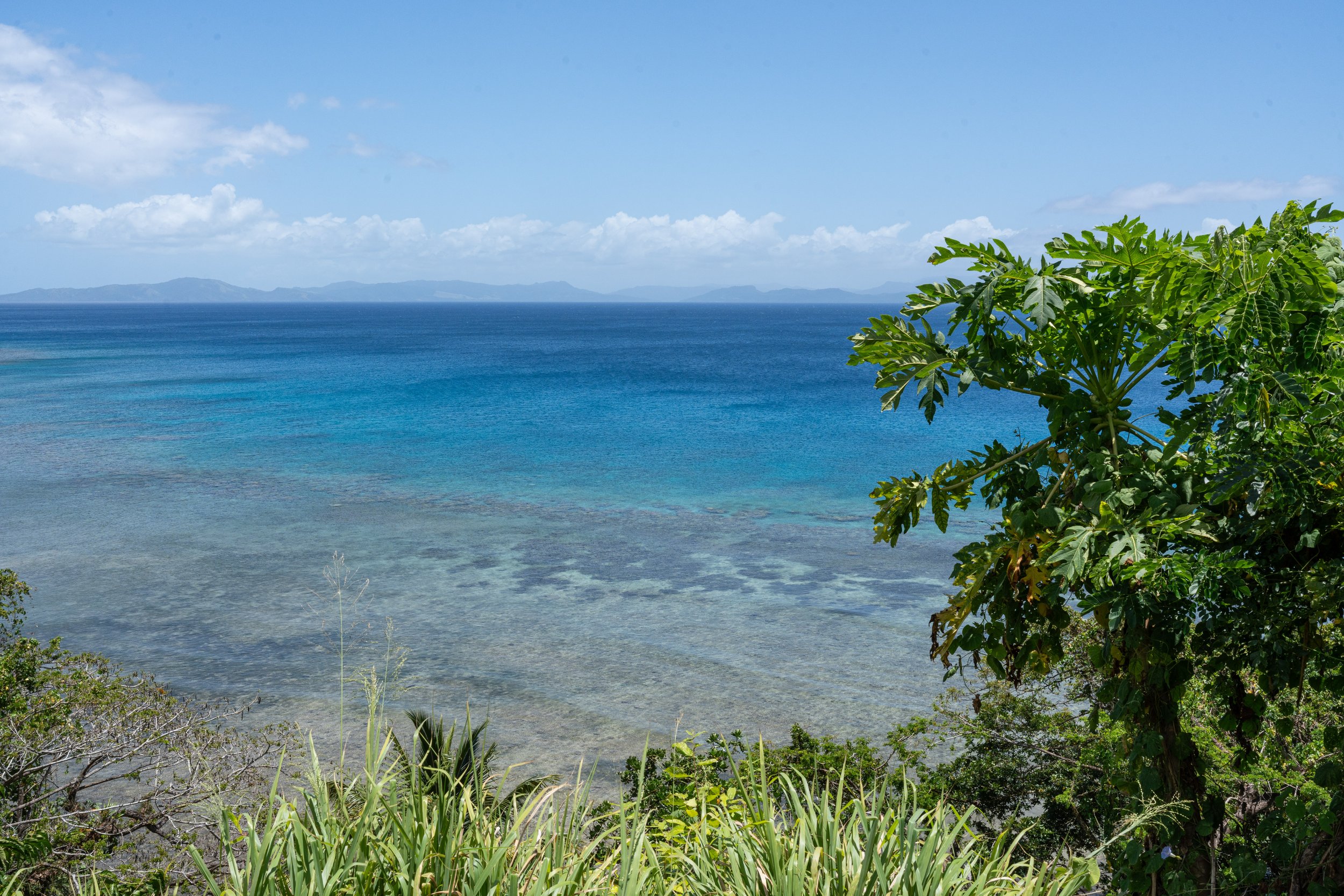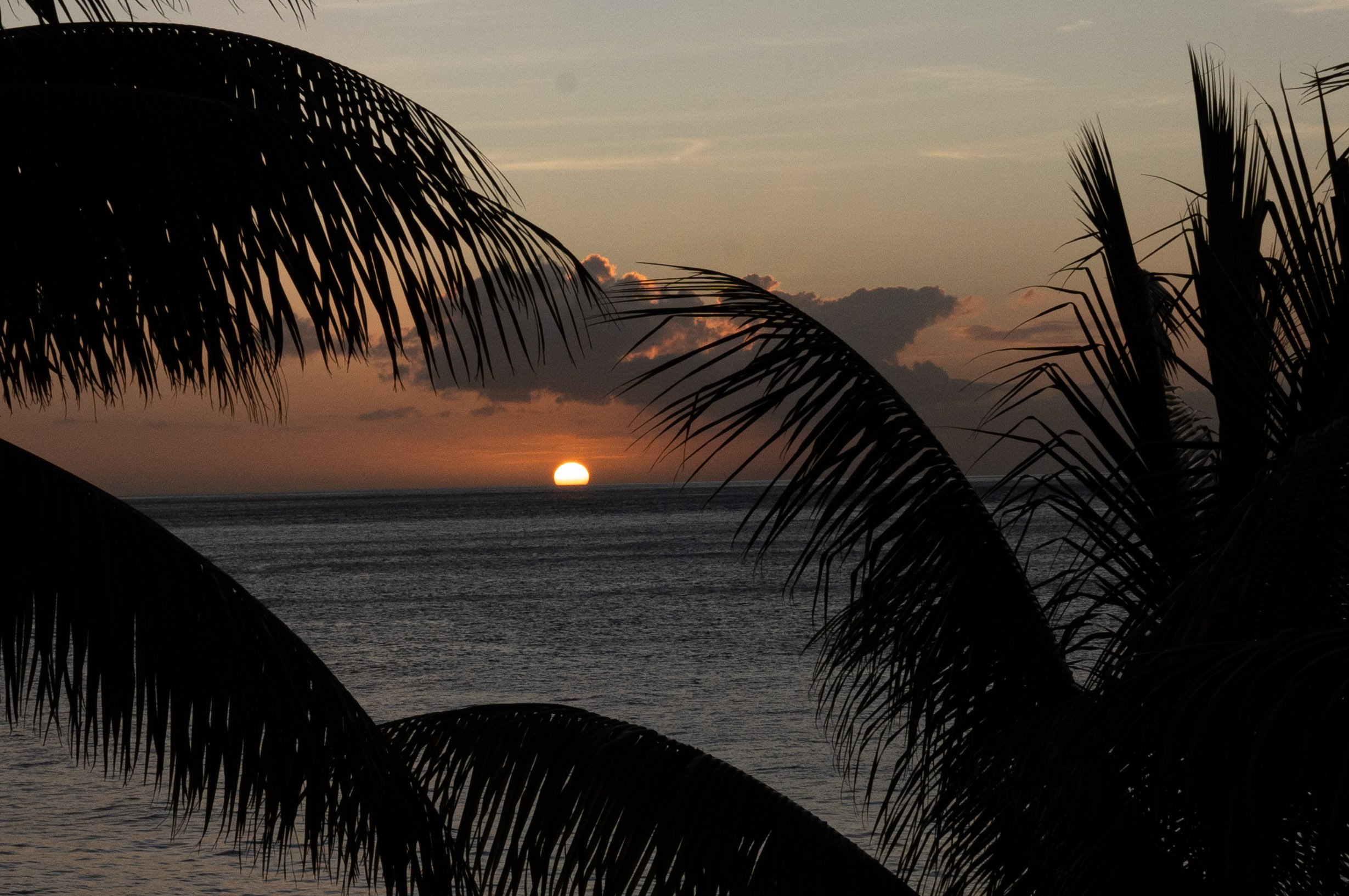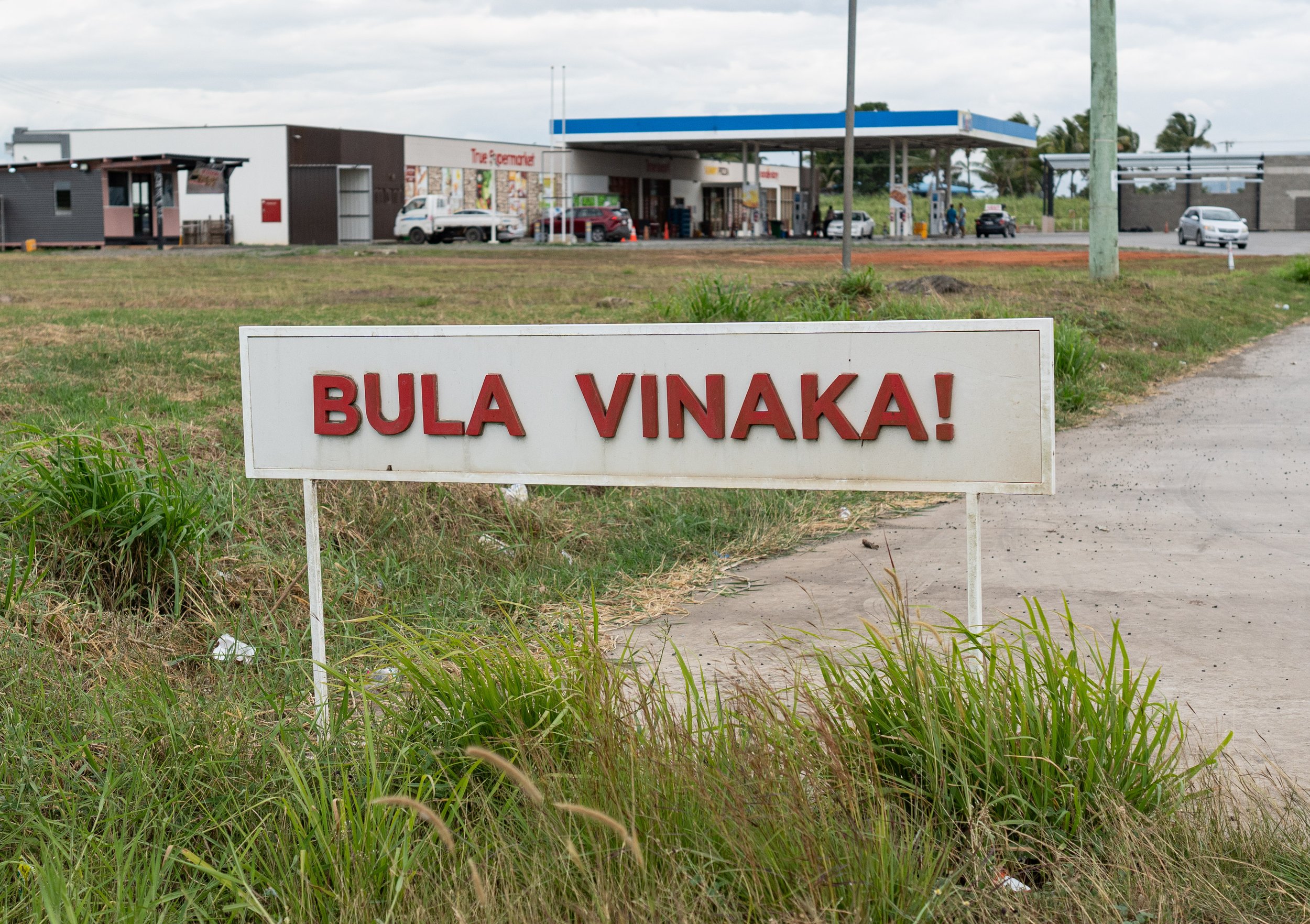New Zealand and Fiji - flash frozen and thawed again
New Zealand: 18,000 kilometers direct line
After arriving at Auckland airport, I took the “red channel” through customs for the first time in my travels - not for tax reasons, but because both the bike and any camping equipment must be declared upon entry into New Zealand. This makes it possible to check whether diseases could potentially be introduced into the country through contaminated equipment. Interestingly, by choosing the red channel, I ended up getting through all the controls much faster, as there were long queues in front of the “green channel”, while the red one was quite deserted (like probably at every airport in the world). I have never been as unprepared for any other travel destination as I was for New Zealand. Early in the morning I put my touring bike back together at the airport. And then? I didn't even have a road map loaded onto my GPS device. Once this problem had been remedied, I could get started. But the welcome in New Zealand was frosty: wet and cold 15°C, I was shivering in my rain gear. Dark clouds hung low over the sky, a headwind of about six force was coming towards me and Jade was no longer there either - frozen in shock at the other end of the world. Inevitably, the hilly grassland around Auckland reminded me of some of Iceland's coastal regions. On the journey to the city center of Auckland I suddenly found a real, connected cycling infrastructure again - the first since Tel Aviv that actually extends from the outskirts of the city to the center. The streets were almost empty. The wind rustled in the trees. The leaves on the streets made the scene appear autumnal, even though spring was just beginning here in the southern hemisphere. This peace and quiet - completely unusual in Indonesia! With two cups of pretty good coffee, I watched the passers-by. People often wore shorts and T-shirts. Clearly, after six months in South Asia and Southeast Asia, I was simply no longer adapted to “normal” temperatures. I stayed in the second cheapest hostel in Auckland's Central Business District (the cheapest is considered a drug addict's flophouse). The average age of travelers in New Zealand was significantly younger than in Bali. A lot of people come here straight after high school to work in New Zealand for a year. Accordingly, there were a lot of people from Germany, France and South America in the hostels on the North Island, sometimes more and sometimes less desperate, looking for work or a used car. Auckland seemed a bit sterile at first. I took several walks through the center in the evening. It seemed like a cool autumn evening. Beautiful. What was extremely unusual for me after my time in Asia: the relative emptiness of the city. A lot of infrastructure, shops and buildings for noticeably few people. Over the next few days I discovered many beautiful house facades from the late 19th or early 20th century in Auckland's city center between the modern high-rise buildings. I started from Auckland for a short tour of the central North Island. Unfortunately I didn't have the time for more. The landscape sometimes seemed like the Bavarian foothills of the Alps with its gentle mountain ranges and green pastures. It's telling that the country furthest from home was suddenly so similar again, both culturally and scenically. The pole of otherness, on the other hand, lay almost exactly halfway in between in northern India. However, the landscape similarity between New Zealand and Central Europe disappears as soon as you enter one of New Zealand's primeval forests. The huge tree ferns make you feel like you've been transported back to the time of the dinosaurs. There were some interesting conversations along the way. I met an Englishman who had emigrated to New Zealand and who makes wooden obstacles for horse racing. Or a Dutchman who arrived in Wellington 70 years ago. When he said goodbye after the conversation, he said to me that we would almost certainly not see each other again and that he therefore wished me all the best. This is a fact of pretty much every encounter on such a trip. The probability of accidentally running into people on the other side of the world again is extremely small. But it still caught me off guard that he said it so openly. In the middle of the city of Rotorua I suddenly found myself standing in front of a boiling lake. Steam rose above the bubbling pool and there was a smell of hydrogen sulfide. I cycled right through the thermal field. Rotorua essentially stands on a volcano and clouds of hydrogen sulphide waft through the streets of the otherwise very well-kept town every day and night. From Rotorua I cycled to Lake Taupo. It lay there peacefully, like a normal lake in Scotland or Sweden. Nothing suggests that a supervolcano lies beneath it, responsible for some of the most powerful eruptions in recent geological history. Near Lake Taupo, after almost 24,000 kilometers on the bike, I reached the point on this journey that is the furthest away from home: 18,000 kilometers direct line. Two places on the earth's surface cannot be further apart than about 20,040 kilometers, which is why 18,000 kilometers is quite close to this maximum. From now on I headed back home. Initially this meant cycling back to Auckland on a route further west. I then stopped by the Hobbiton film set, where scenes for the Hobbit and the Lord of the Rings trilogy were filmed. On the way to Hobbiton, a bird attacked me from above on a small country road because I had apparently gotten too close to its nest - another parallel to cycling in Iceland, where the “krias” can get on your last nerve. A good reason to wear a helmet...
Fiji: where 180° East equals 180° West
At some point during the planning I decided to make one last stop in the Pacific on the Fiji Islands before finally crossing the huge ocean. From Auckland I took a flight to Nadi (pronounced Nandi) on the west coast of the main island of Viti Levu. I didn't know what to expect in Fiji beforehand. Cycling is almost unknown there. What would the roads be like? Since it is almost impossible to find a bicycle box in Fiji, I was kindly allowed to store my box in the luggage room of the hostel for two weeks. Since that luggage compartment turned out to be a final storage facility for all sorts of rubbish, the box didn't attract any negative attention. I arrived on the national holiday, Fiji Day. The national sport of rugby was played on the beach and “kava”, a drink based on the intoxicating pepper, was soon served in the hostel. A few Argentinians had been living here for a while and were more or less frustrated waiting for visas for Australia or New Zealand. From Nadi I cycled clockwise around Viti Levu. Pretty much everyone on the street and next to them greeted me with a loud “Bula!”, which here is both a “hello” and a toast. Soon I was in the rural areas of Fiji. In small grocery stores, like in India, you have to tell the sellers what you want because you are usually not allowed to go through the shelves yourself. Many taro plants (here called “dalo”) with their large leaves grew under a large tree. The root and leaves are prepared as vegetables. Small bushfires burned in many places across the island. There had been little rain for months. One afternoon I stopped at a billiards cafe in Namuaimada. I had a coffee and Ben, the owner, soon offered me the opportunity to camp next to the cafe. Gladly! During the course of the evening a number of men from the village stopped by. If you want to spend the night here, you have to lend a hand: Ben asked me to throw the rubbish into the fire during the evening waste incineration and then to keep the fire under control with water. At some point I was relieved of my duties. The fire suddenly re-ignited later, but Ben got it under control again. The onset of rain helped. It was amazing how relaxed everyone was, even though I burned down almost half of the slope. From Natovi in the east of Viti Levu I then took a ferry to the second largest island in the archipelago, Vanua Levu. While the coastal strips with their mangrove forests and white sandy beaches represent a typical South Seas paradise, there are extensive pine forests in the interior of the island. On the ferry I met the two German Cologne residents Jessi and Caspar as well as Manu from the village of Nabavatu, who invited me to his family's home. Because part of the village was threatened by a major landslide, the residents had to move into a makeshift tent city three years ago. As is so often the case, the temporary solution became long-lasting without planning. Despite the difficult environment, the residents of the tent city maintain their optimism and cheerful nature. However, the contrast to the luxury resorts for tourists not too far away could hardly be greater. Meanwhile, Manu's aunts started preparing dinner and I was allowed to look over their shoulders. Fish was cooked in water with onions and ginger and later eaten with a coconut chili sauce. There was also boiled cassava root and buffers, which were pan-fried from wheat flour, dalo leaves, garlic and ginger. Very delicious! In the morning, Manu's aunt prepared roti (a flatbread), which was then soaked in salted coconut juice - one of the best breakfast dishes so far. I would like to thank Manu and his family very much for their fantastic hospitality! Vinaka!
On Vanua Levu I then cycled to Buca Bay in the northeast of the island. Why there? From there small boats go to the island of Taveuni. And Taveuni has a geographical peculiarity: it is one of the very few places in the world where the 180th longitude, i.e. the antitimeridian, which runs exactly opposite the London prime meridian, meets land. It is simultaneously both the easternmost and westernmost place you can reach, namely 180° east and west respectively. Crossing the antitimeridian meant that I could not display the GPS track of this stage correctly in Komoot, because the software got confused.
From Taveuni I took a small wooden ferry across to Buca Bay and hitchhiked back to the ferry port of Nabouwalu on the same day, where I took the ferry back to Viti Levu that night. Within three more stages I completed the circumnavigation of Viti Levu back to Nadi. I spent another day in the capital Suva to visit the city. One of the very few remaining parts of the famous “HMS Bounty” (a piece of the rudder) can be viewed in the National Museum of Fiji.
The Dateline: October 26, 2023 (again…)
I spent October 26th quite relaxed in the hostel and on the beach in Nadi. That evening I boarded a Fiji Airways plane to San Francisco around 10 p.m. The sun rose during the flight. It rose on October 26th - again. Just like Phil Connors in “Groundhog Day,” I experienced October 26, 2023 twice. I arrived in San Francisco in the early afternoon around 1:30 p.m., 8.5 hours before my flight took off. How is that possible? Well, somewhere in the Pacific I had crossed the date line east that night. In the past, the date line always ran along the 180° longitude, but today it often runs east of it so that national territories no longer have different dates. If you cross the date line to the east, the clock is set back 24 hours. Why? When you travel in a certain direction, you change the clock as soon as you enter a different time zone. If you travel back in the opposite direction, you also reset the clock. The traveler's watch will again show the same time and date as a watch that always remained at the starting point. But not on a trip around the world. I always cycle, fly or travel on ships towards the east, towards the rising sun. With a few exceptions, I keep setting the clock forward. Always further forward, always further forward, but almost never back, until all 24 time zones have been crossed. If I were to reach Berlin again, my watch would show a time that is 24 hours earlier than a watch that had remained in Berlin and was never set forward. Because of setting the watch always forward, it would seem that I had traveled a day into the future, but that is not the case, of course. To correct this constant moving the clock forward (when traveling east) or back (when traveling west), the Pacific Date Line was introduced. If you go east, one day is deducted; if you go west, one day is added. In this way it is ensured that the world travelers' watches show not only the correct time but also the correct date when they return home.
The phenomenon of the date line also plays an important role in Jules Verne's novel “Around the World in Eighty Days”: After the protagonists, who also reached the American continent in San Francisco, by the way, always traveled east and arrived back in London, they thought, looking at the date on their pocket watches, that they had lost the bet by one day. Fortunately, they had just overlooked setting their clocks back one day at the date line - the bet was still won.
In this way, I experienced the afternoon of October 26, 2023 twice: the first time under the coconut palms on Viti Levu, the second time in a house in San Francisco. From there I started my journey across the United States.
About cycling on this section
New Zealand: Due to the very limited time, I was only able to do a short tour of the North Island. In the Auckland area I still stuck to official cycle routes, but outside of the city they quickly turned into very poor, unkempt gravel and mud paths. I therefore cycled largely on smaller country roads, even if these are not really bicycle-friendly due to their narrowness and heavy truck traffic. From Auckland I cycled via Kopu, Te Aroha, Matamata and Tapapa to Rotorua and from there via Broadlands to Taupo. Supply options can become scarce en route, which is why some advance planning is necessary. From Taupo I drove back to the Auckland area via Mangakino, Arapuni, Cambridge and Hamilton. The long-distance cycle path on the Waikato River between Cambridge and Ngāruawāhia is very well developed, but otherwise I always traveled on country roads.
Fiji: Fiji turned out to be a surprisingly beautiful cycling destination. I cycled on the ring road around the main island of Viti Levu and on Vanua Levu from Nabouwalu via Nabavatu and Savusavu to Buca Bay, from where you can cross to Taveuni. The ring road was always paved and on Vanua Levu only the last 20 kilometers to Buca Bay were unpaved. Outside the Suva and Nadi areas, traffic on the main island was never unpleasant and Vanua Levu generally had very little traffic on the roads. Restaurants and supply options are sometimes rare on both large islands, so keeping a small supply doesn't hurt. The small grocery stores in the villages are often poorly equipped. The people of Fiji are always extremely friendly, but their dogs are less so. Since they are not used to bicycles at all, they often react excitedly. However, any situation could be defused by standing still and speaking to the dogs. The ferry between Natovi on Viti Levu and Nabouwalu on Vanua Levu runs several times a day (different ferry companies). Prices vary from ship to ship as bicycles are handled differently (between 67 and 90 Fiji dollars, October 2023). The crossing from Buca Bay to Taveuni and vice versa always starts in the morning between 7:00 a.m. and 9:00 a.m. and always costs 15 Fiji dollars. Attention: when crossing to Taveuni with a bicycle, you should avoid the boat “Fibre Lady” if possible. There the bike is strapped to the bow. Larger waves then break unhindered over the bike - resulting in corrosion problems due to the salt water.

